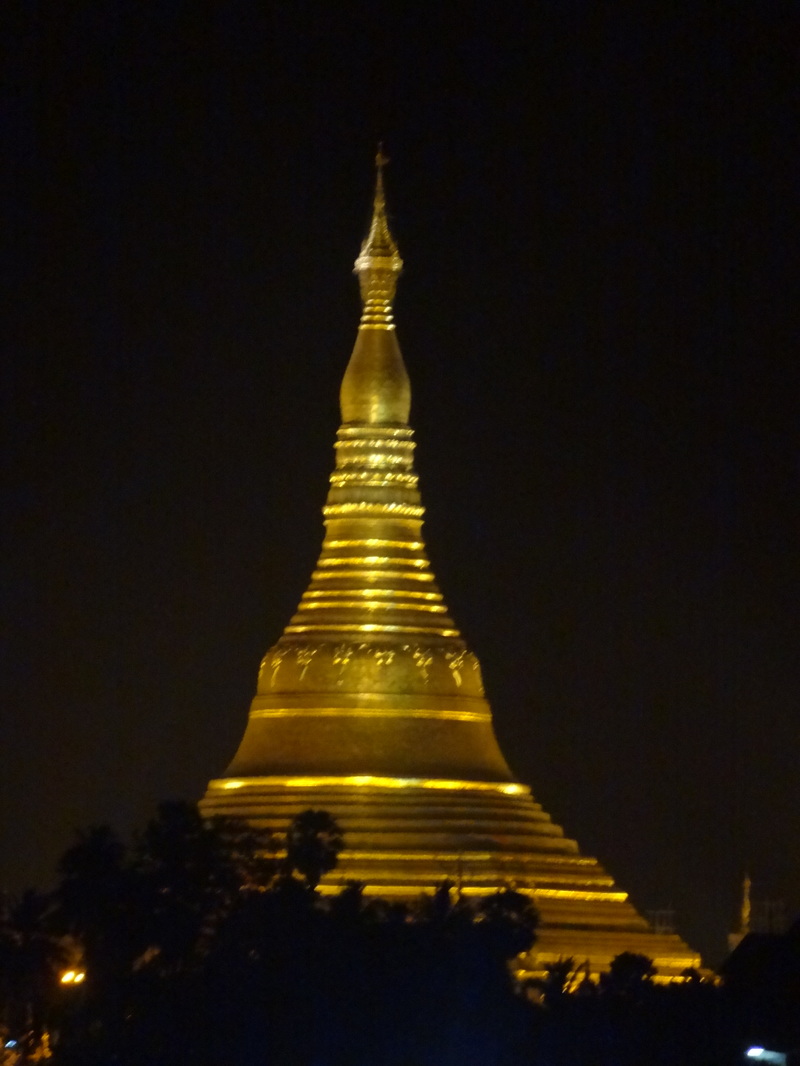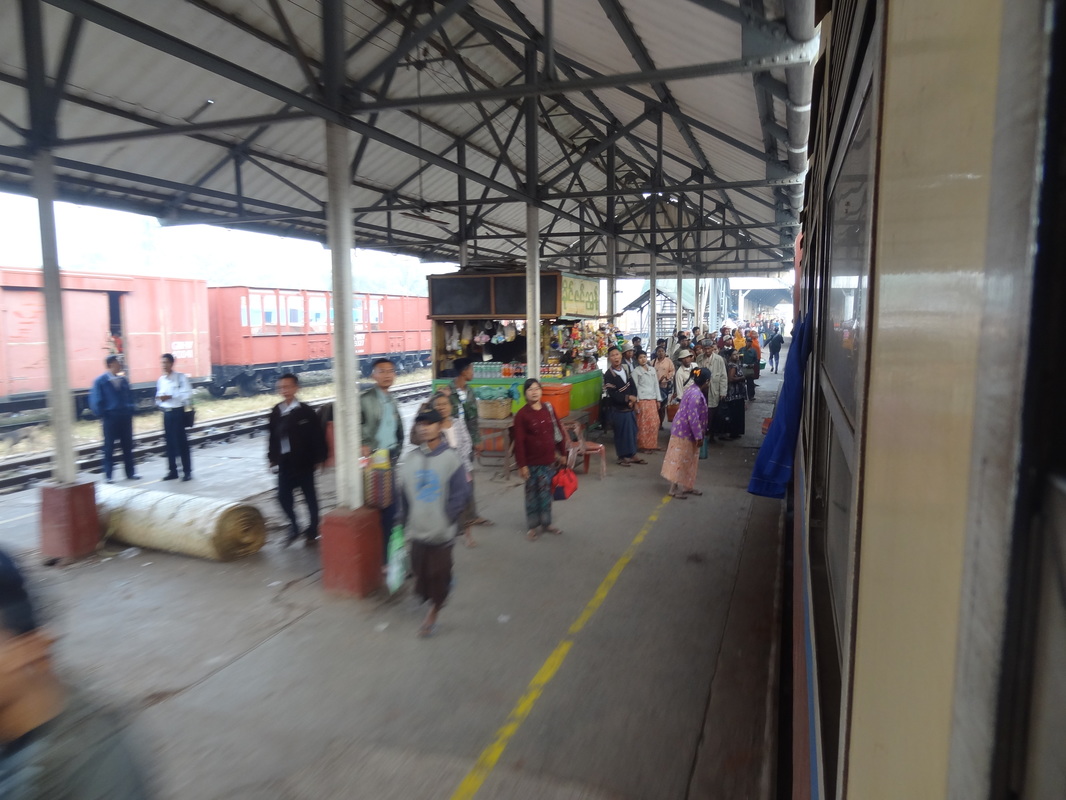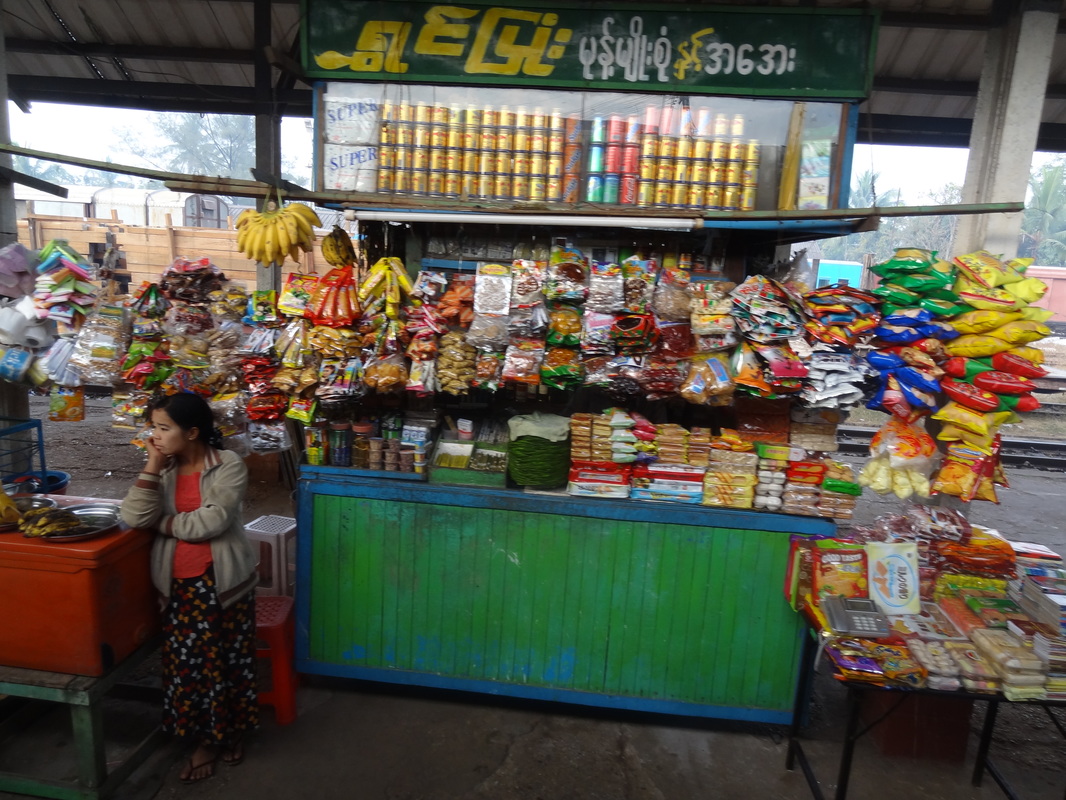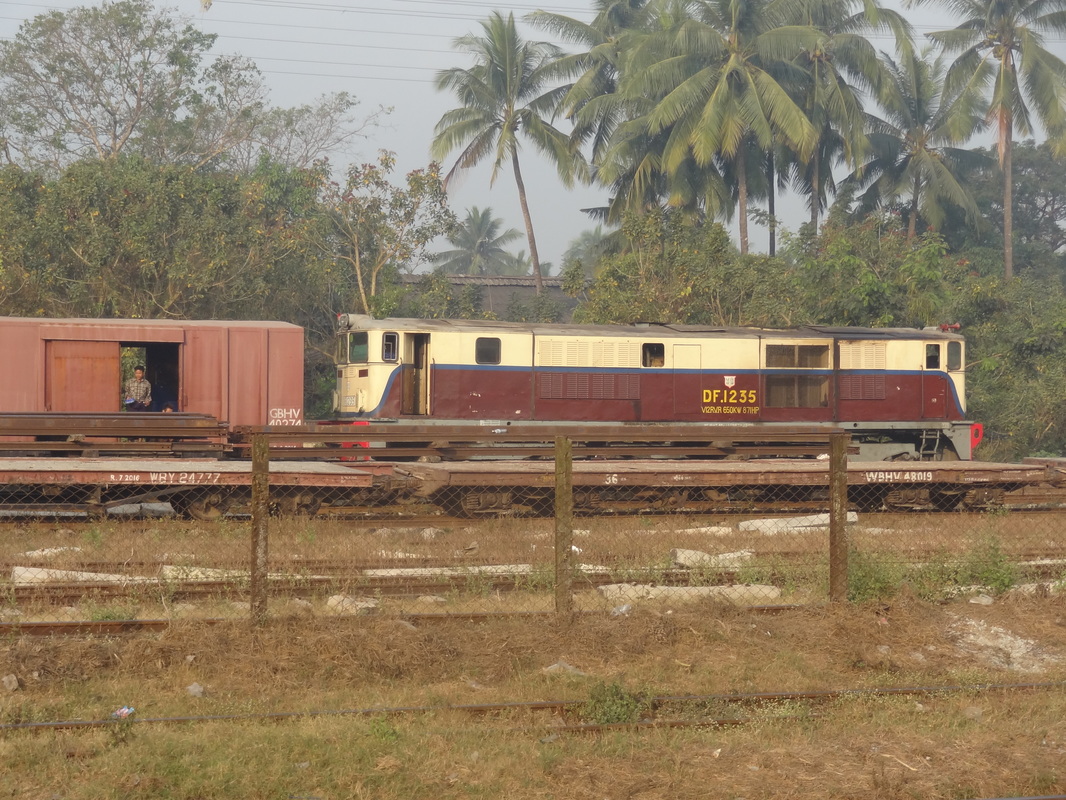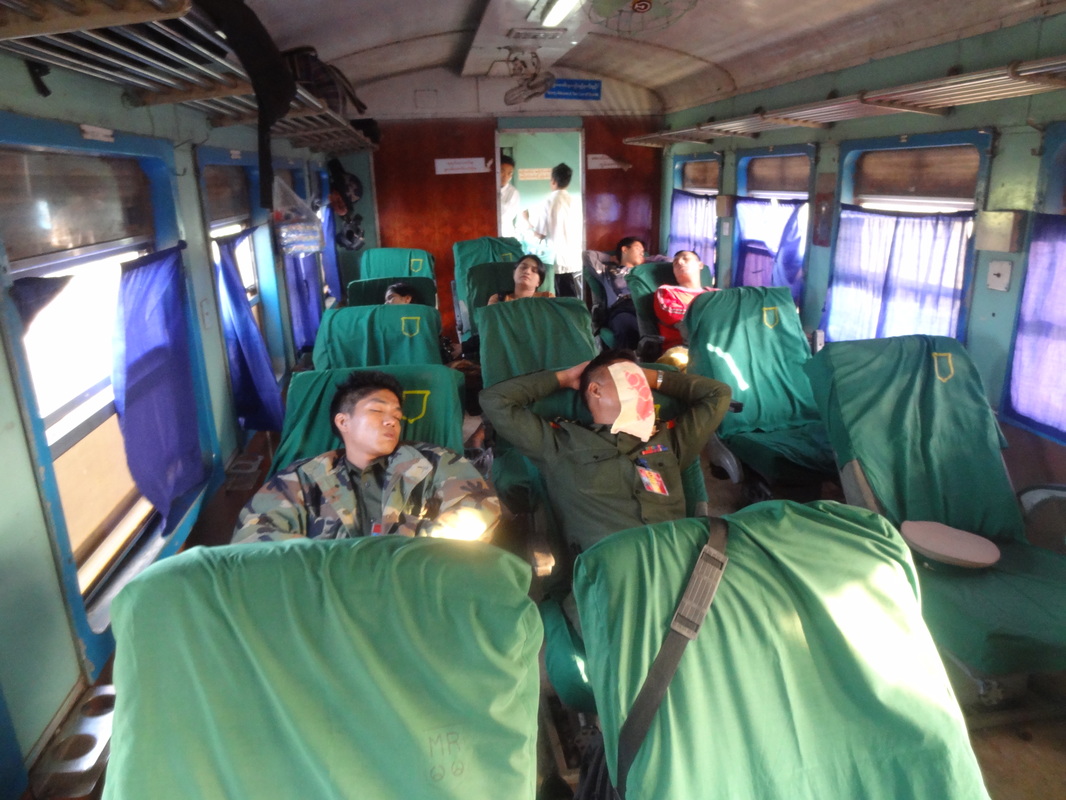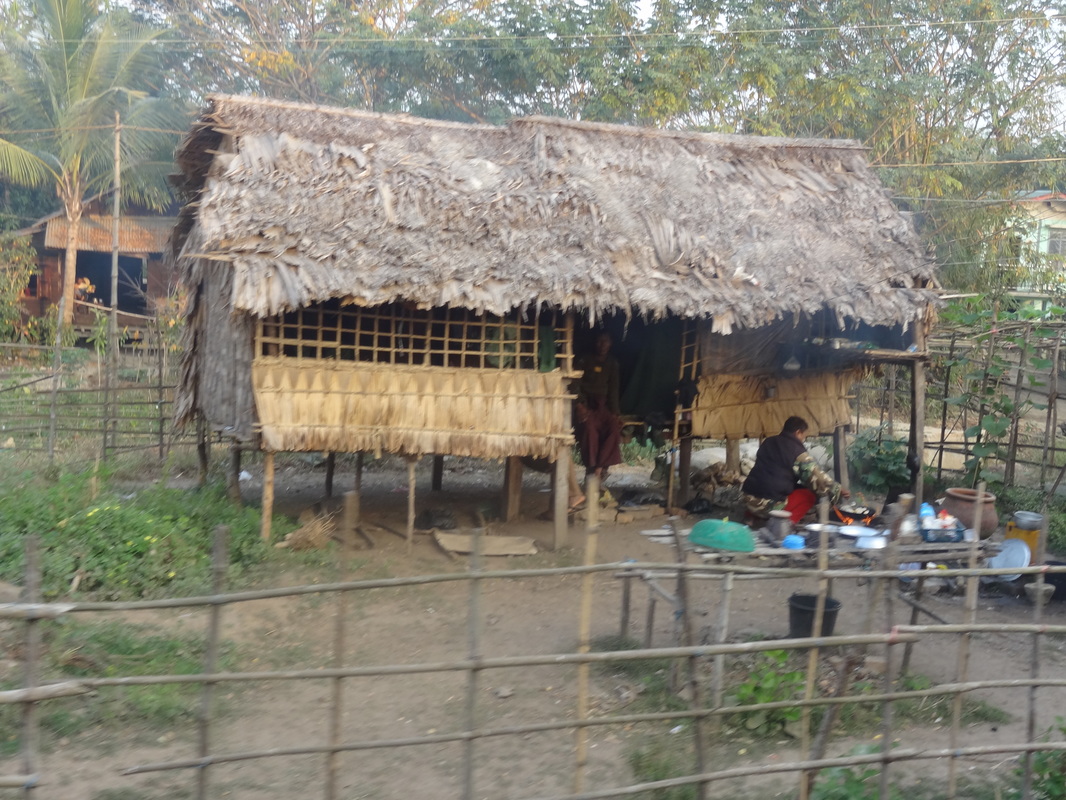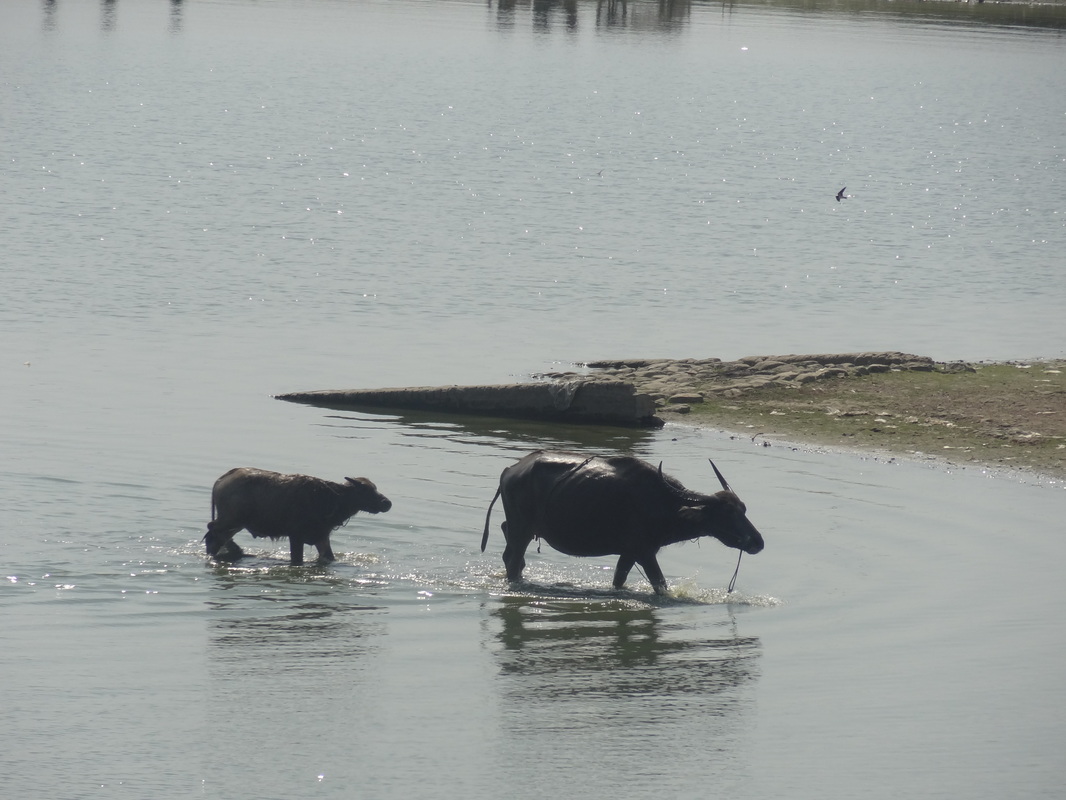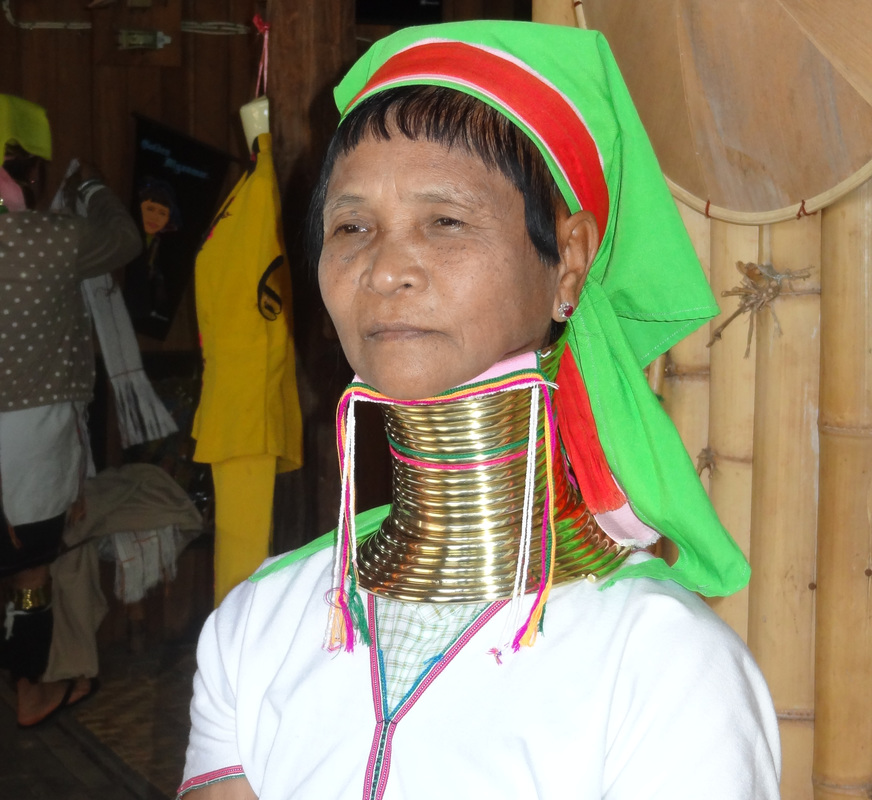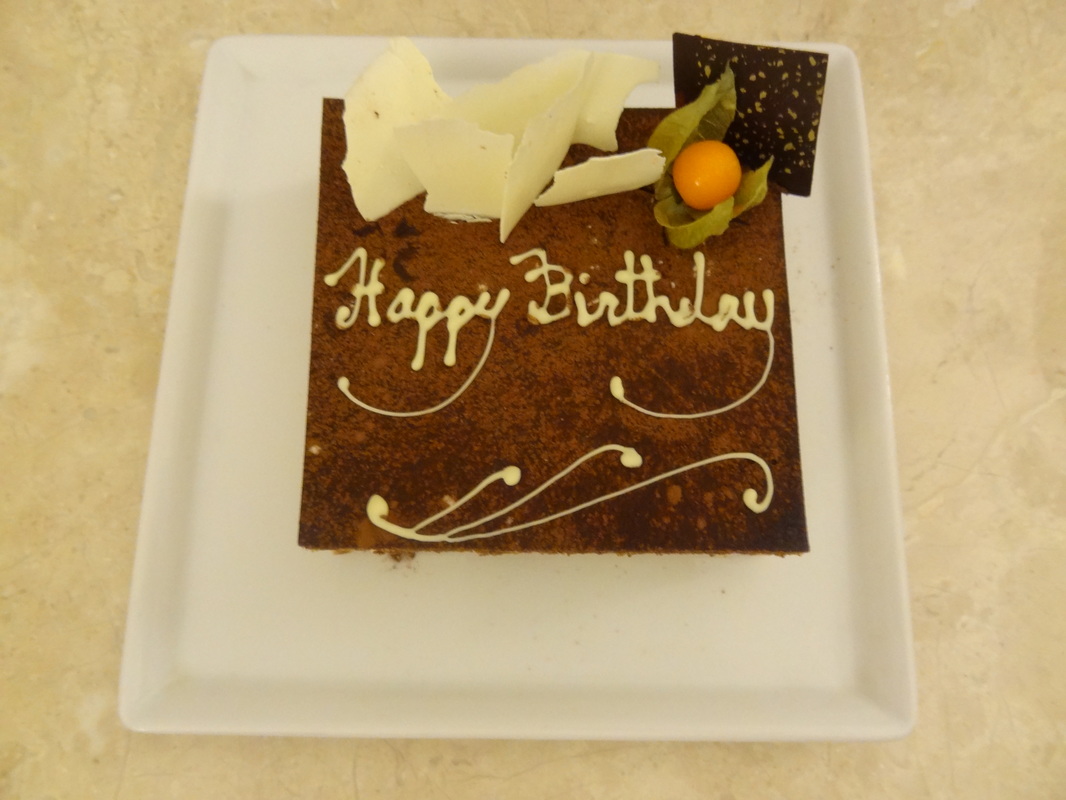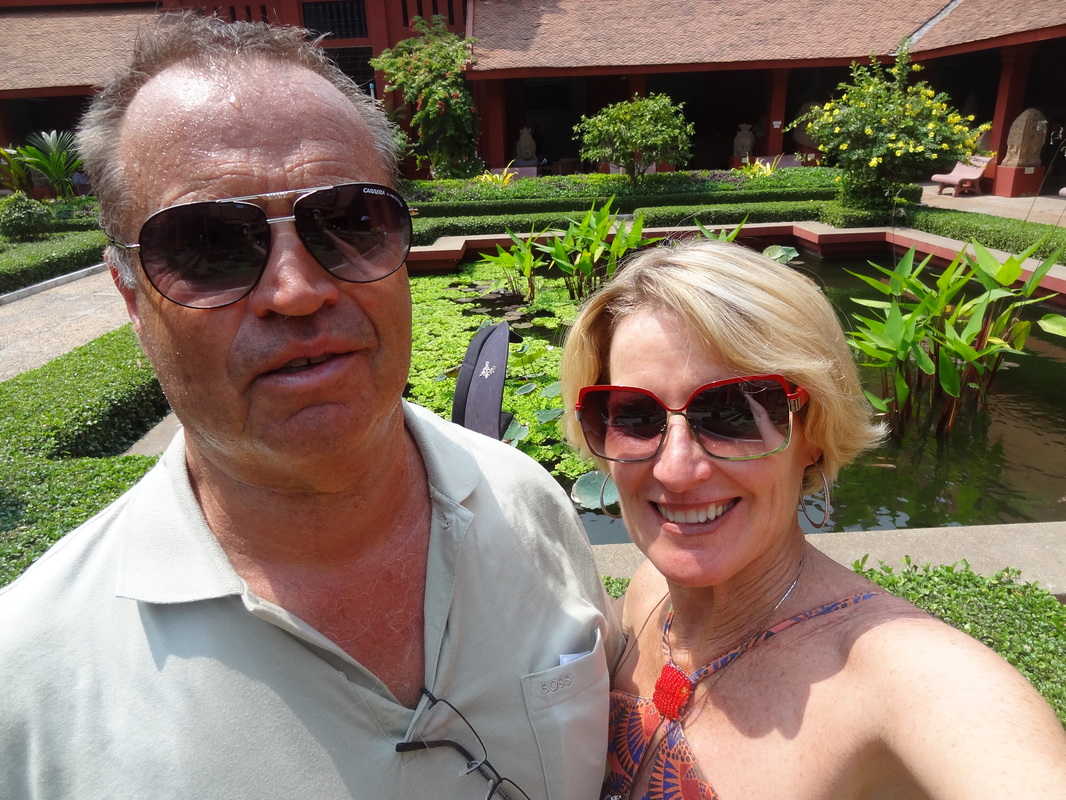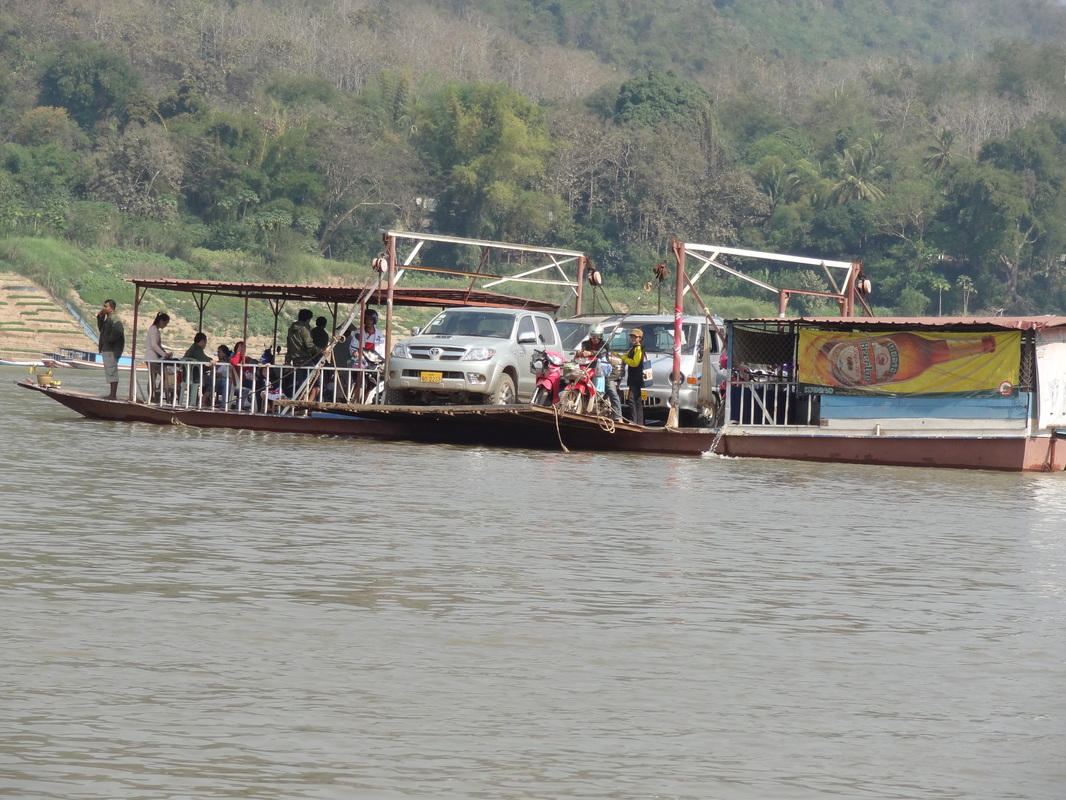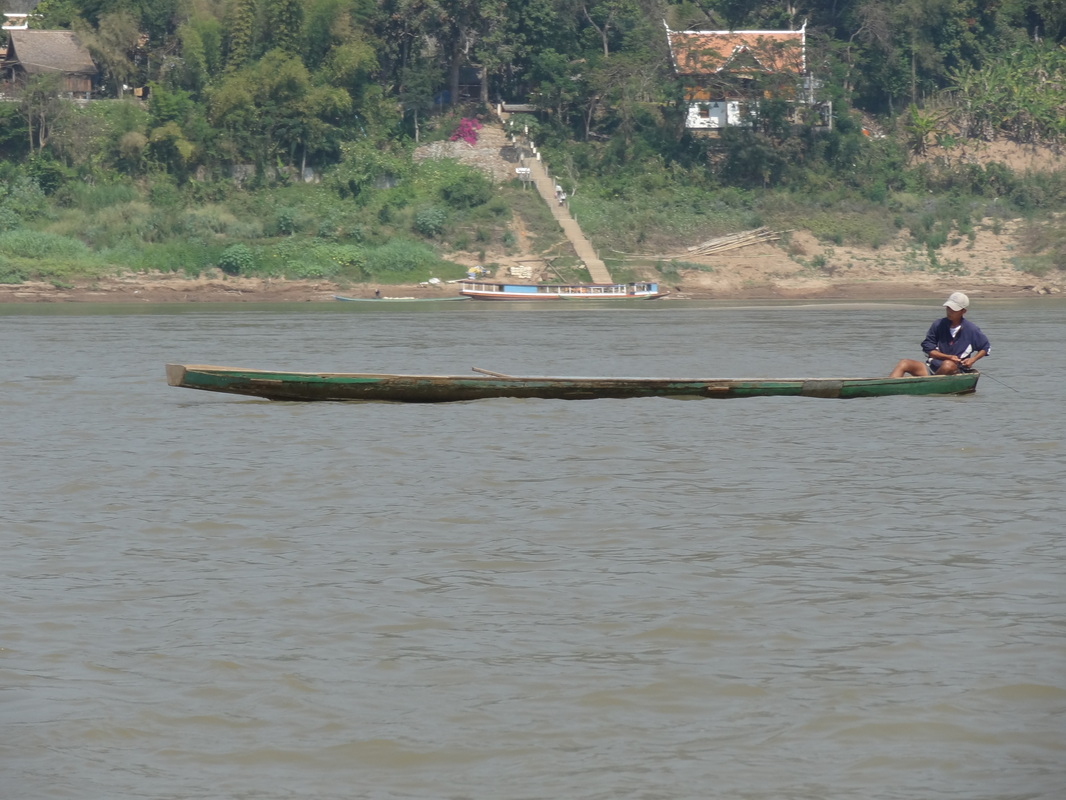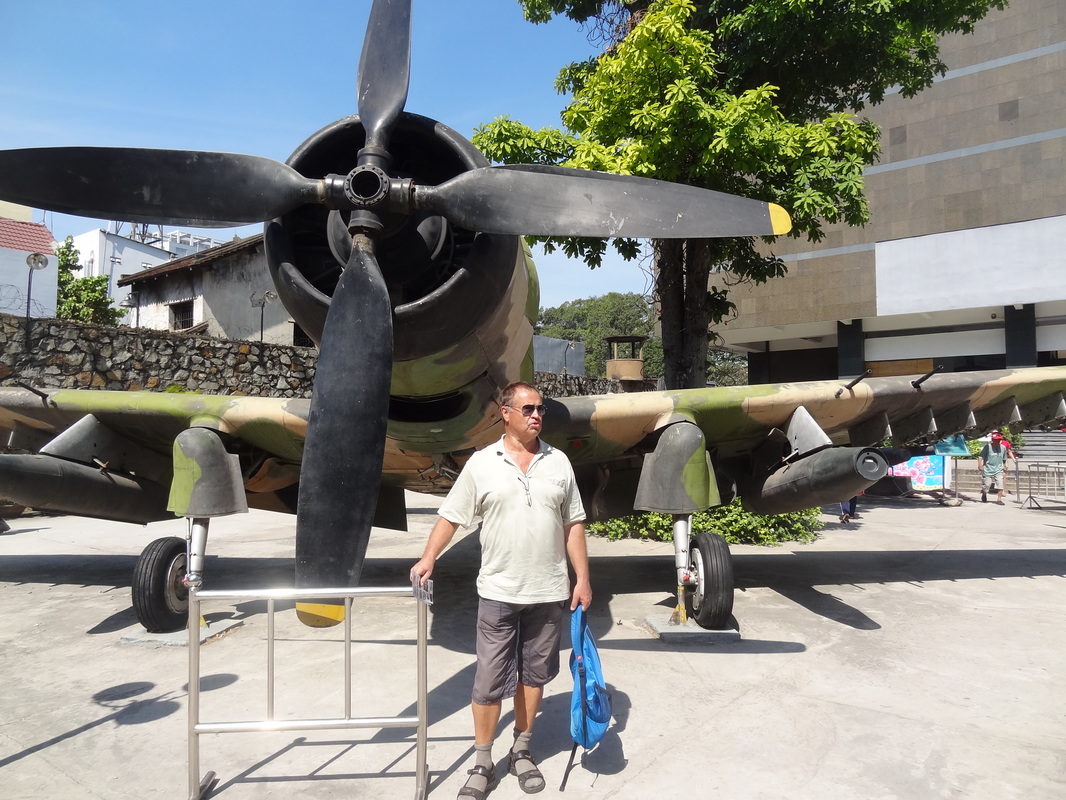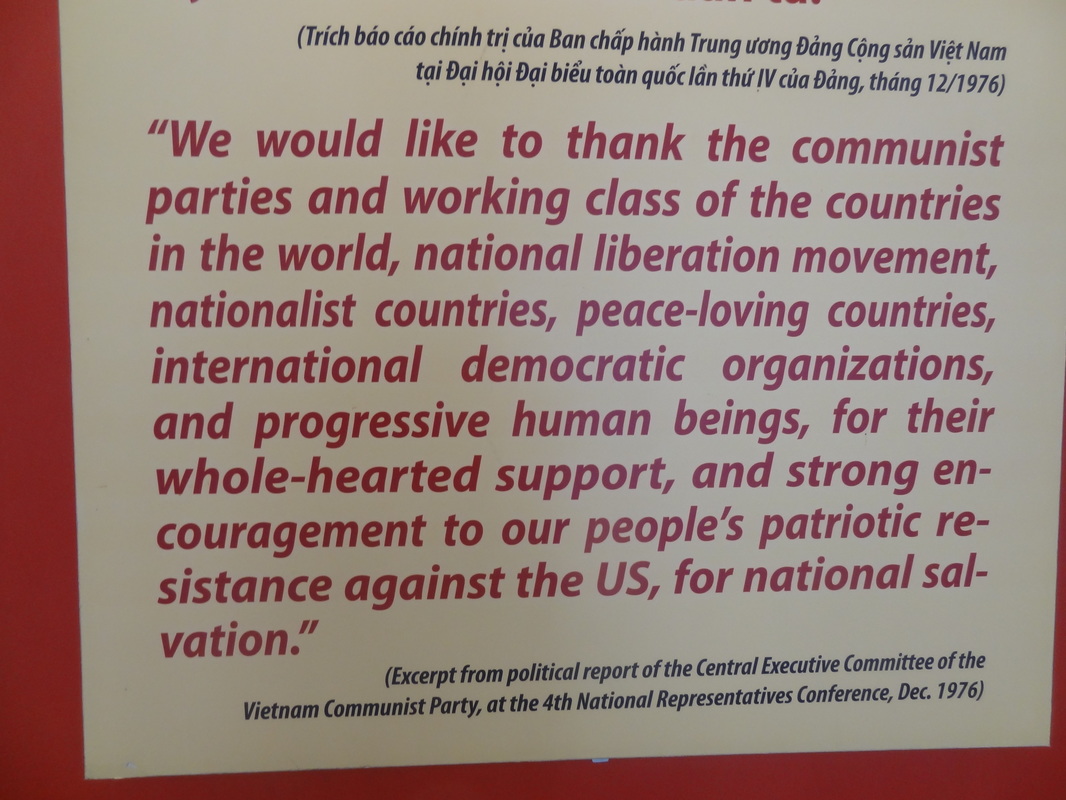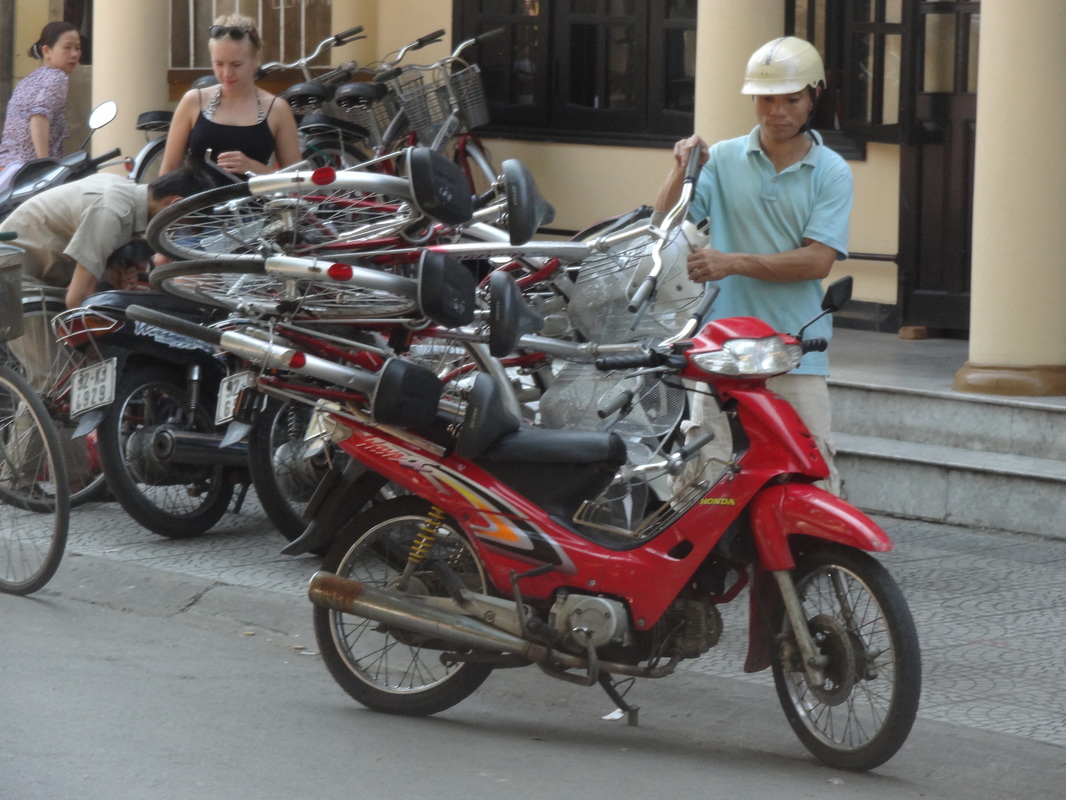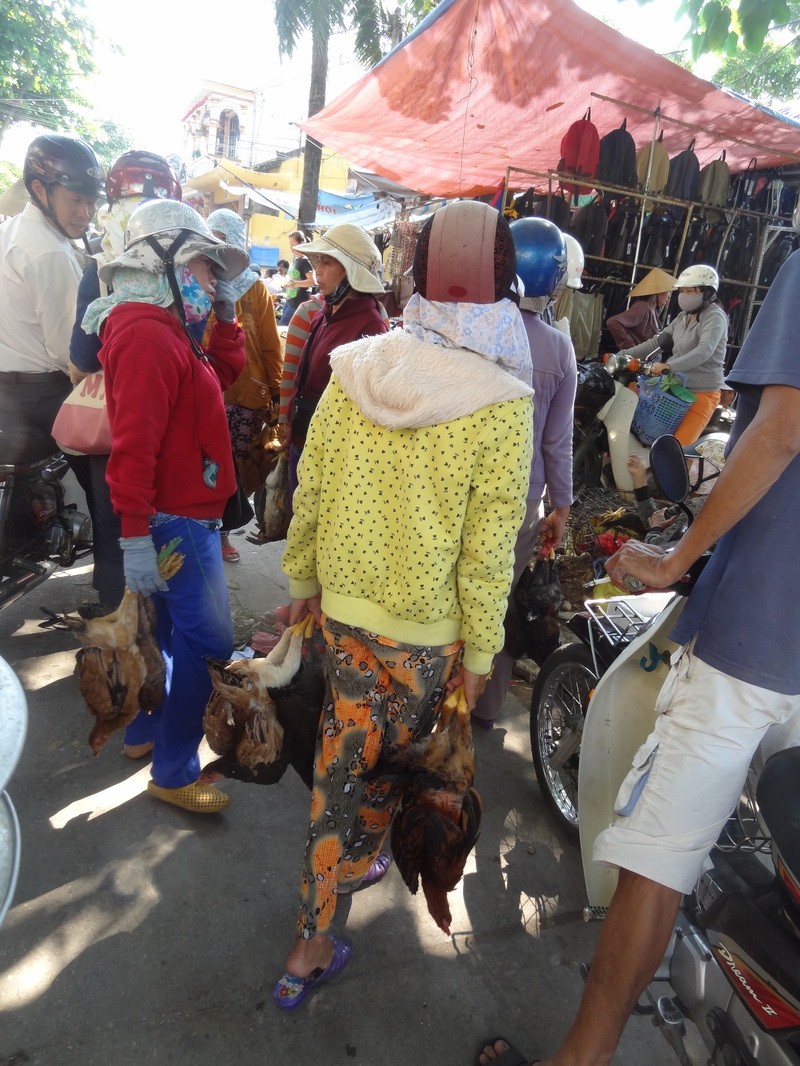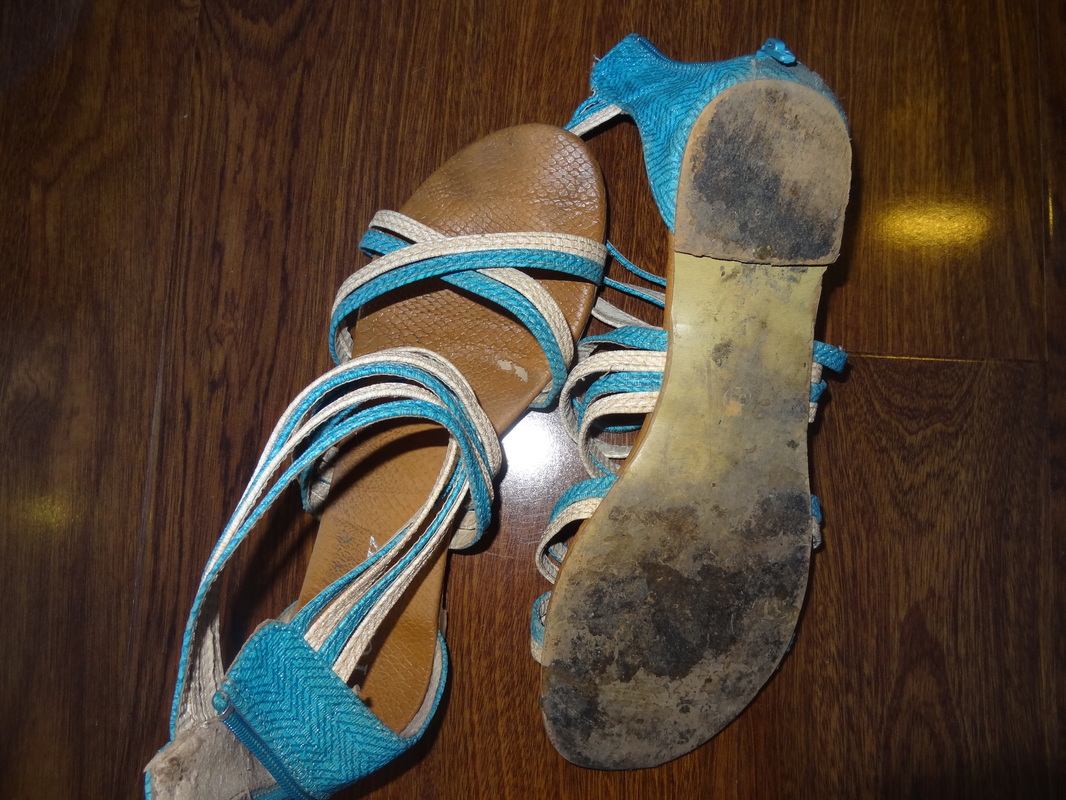Southeast Asia 2013
We left Sicily in January 2013 and flew to southeast Asia first arriving in Thailand, then took regional flights to Myanmar, Cambodia, Laos, and then Vietnam. From Vietnam, we flew to Canada, then The Netherlands, returning to Big Sky in Sicily, making our two months away a complete round-the-world trip.
We left Sicily in January 2013 and flew to southeast Asia first arriving in Thailand, then took regional flights to Myanmar, Cambodia, Laos, and then Vietnam. From Vietnam, we flew to Canada, then The Netherlands, returning to Big Sky in Sicily, making our two months away a complete round-the-world trip.
Thailand
January 21st, following 24 hours nearly to the minute from locking Big Sky in Southern Sicily, we unlocked the door to our beautiful 700-square-foot hotel room in Thailand's capital, Bangkok. The Kingdom of Thailand, formerly known as Siam has the longest reining monarchy, since 1946. A beautiful breakfast was included in our hotel stay along with a complimentary spa treatment which I booked for later that afternoon as well as a one-hour foot massage for the next day. At 9 am, we teased our taste buds with their delicious breakfast, and to-die-for teriyaki salmon. Looking our the window, we saw a heavy overcast morning, likely a mixture of smog and heavy air. The sun finally burned through and we walked out into thick-air heat.
January 21st, following 24 hours nearly to the minute from locking Big Sky in Southern Sicily, we unlocked the door to our beautiful 700-square-foot hotel room in Thailand's capital, Bangkok. The Kingdom of Thailand, formerly known as Siam has the longest reining monarchy, since 1946. A beautiful breakfast was included in our hotel stay along with a complimentary spa treatment which I booked for later that afternoon as well as a one-hour foot massage for the next day. At 9 am, we teased our taste buds with their delicious breakfast, and to-die-for teriyaki salmon. Looking our the window, we saw a heavy overcast morning, likely a mixture of smog and heavy air. The sun finally burned through and we walked out into thick-air heat.
It's an odd twist, men are served and regarded first. The men at our hotel doors opened the door for Con and ushered him in first. No regard for me. He is offered the first seat in restaurants, hotel staff speak to him, and he is given the first cappuccino when two drinks arrived at our table.
Walking to the public transit, we boarded boats and buses to visit: the Wat Arun, Temple of Dawn, a Buddist Temple on the River Chao Phraya.
The temple was once on the palace grounds, but is now relocated across the river. We'll visit tomorrow.
NEVER TOUCH A MONK!
Messages given to females: "If you are a female and want to give alms or food, you must set the offering nearby or on their receiving cloth. If you so much as brush against a monk on the crowded streets or water taxi of Thailand, then he will have to return to the temple and perform rituals to cleanse of your touch."
I accidentally touched a monk today! I tried to give him a wide berth on the crowded water taxi, but he brushed up against my arm. I pretended it didn't happen. So did he.
The temple was once on the palace grounds, but is now relocated across the river. We'll visit tomorrow.
NEVER TOUCH A MONK!
Messages given to females: "If you are a female and want to give alms or food, you must set the offering nearby or on their receiving cloth. If you so much as brush against a monk on the crowded streets or water taxi of Thailand, then he will have to return to the temple and perform rituals to cleanse of your touch."
I accidentally touched a monk today! I tried to give him a wide berth on the crowded water taxi, but he brushed up against my arm. I pretended it didn't happen. So did he.
January 24 -- The hotel doors were opened again for Con to exit, I follow behind prepared to open them myself. We headed on foot to the sky train, then onto the public boat again getting off at the Royal Palace. Walking to the entrance gate, a uniformed police man with a badge, "Tourist Assistant" stopped us and pointed to the palace, "It's not opened until 3:30 pm because they're having lunch."
That surprised us, a big tourist attraction closed for lunch, but stranger things...
"You should go to the Golden Buddha and then the Royal Thax. It's only opened today and this is your lucky day. Here," he hailed a Tuk Tuk. "Only 20 Baht, and this man will take you."
"Okay," Con said as we got in, "Only the Golden Buddha, not the other," he told the driver.
The driver crossed the busy road, stopped, looked us up and down. Not wanting to take the scam any further said, "Get out, no charge."
Walking back toward the palace, we spotted the sign, "Don't let anyone stop you or tell you the palace is not opened."
The palace was jammed packed. I brought a head scarf, but that wasn't enough cover. I had to rent a blue shirt to cover up to their comfort. Sheesh.
That surprised us, a big tourist attraction closed for lunch, but stranger things...
"You should go to the Golden Buddha and then the Royal Thax. It's only opened today and this is your lucky day. Here," he hailed a Tuk Tuk. "Only 20 Baht, and this man will take you."
"Okay," Con said as we got in, "Only the Golden Buddha, not the other," he told the driver.
The driver crossed the busy road, stopped, looked us up and down. Not wanting to take the scam any further said, "Get out, no charge."
Walking back toward the palace, we spotted the sign, "Don't let anyone stop you or tell you the palace is not opened."
The palace was jammed packed. I brought a head scarf, but that wasn't enough cover. I had to rent a blue shirt to cover up to their comfort. Sheesh.
Grand Palace
We toured the palace learning that is was established in 1782 and houses the royal family and is the home of the Emerald Buddha, a protected image in the Kingdom of Thailand.
We toured the palace learning that is was established in 1782 and houses the royal family and is the home of the Emerald Buddha, a protected image in the Kingdom of Thailand.
Myanmar
January 27 -- A military coup in 1962 swept the Brits out of the country by a military dictatorship, changing the country's name from Burma to Myanmar. In 2011, the dictatorship ended, but the government was made up of the same people. Aung San Suu Kyi was elected in 1990 while under house arrest and remained there for 15 of the 21 years the military controlled the country. From 1989-2010. Her father was the man that freed Burma from the British but was later murdered during the military coup.
It used to be difficult to travel to Myanmar as the country has had the longest running civil wars within their ethnic groups. We are not allowed to tour the country without an agent. ATMs are non existent and credit cards are not used there. Cash only. The agent told us to deposit money into an account in Thailand and to arrive with "crispy US bills". I had spent an afternoon before we left the boat, ironing our cash.
January 27 -- A military coup in 1962 swept the Brits out of the country by a military dictatorship, changing the country's name from Burma to Myanmar. In 2011, the dictatorship ended, but the government was made up of the same people. Aung San Suu Kyi was elected in 1990 while under house arrest and remained there for 15 of the 21 years the military controlled the country. From 1989-2010. Her father was the man that freed Burma from the British but was later murdered during the military coup.
It used to be difficult to travel to Myanmar as the country has had the longest running civil wars within their ethnic groups. We are not allowed to tour the country without an agent. ATMs are non existent and credit cards are not used there. Cash only. The agent told us to deposit money into an account in Thailand and to arrive with "crispy US bills". I had spent an afternoon before we left the boat, ironing our cash.
It was hot and lengthy entry into the country at the Yangon International Airport, however, our visas were there waiting for us, It was a complicated process, but it all seemed to go okay. We collected our bag and exchanged 190USD for 160,000 Kyats. Walking to the exit, we saw a man holding the sign, "Sprenger".
"Ming ha la ba" the man greeted us softly. He wore a longhi, (long skirt) wrapped and tied at the front. He introduced himself, "I'm One." He led us to our van, chauffeured by "Ten" who drove us into the city to check into our hotel called, "My Hotel".
"Ming ha la ba" the man greeted us softly. He wore a longhi, (long skirt) wrapped and tied at the front. He introduced himself, "I'm One." He led us to our van, chauffeured by "Ten" who drove us into the city to check into our hotel called, "My Hotel".
We studied what to do and not to do before coming to Myanmar. Specifically, how to greet people. Never touch them! Never kiss cheeks like in Europe. President Obama could have been provided guidelines when meeting Aung Sang Suu Kyi when he shamed her (more himself) by kissing her cheeks. The appropriate greeting is a gentle yoga-styled hands together with a slight bow.
We were driven through Yangon, formerly called Rangoon, toward our hotel and asked for a detour to see "The Lady's residence, Aung Sang Suu Kyi's house. She is the elected leader of the Democratic Party holding 45 seats, but the Military Government holds 455. Ten stopped across the street so we could ponder the lake-front property where she was held under house arrest. It is beautiful.
The streets were chaotic, noisy and smelly. Scooters are not allowed in downtown Yangon, drivers keep right, but strangely steering wheels are on the right. We were told they come from Japan. A small car will cost 20,000 USD, half of what it was a few years prior. One's girlfriend graduated with a Physics degree and works six days a week, 8 am to 8 pm as a dental assistant, with just Tuesday's off. She makes 130 USD per month, paid in kyats. A modest apartment rents for 200 USD per month, so many families share accommodations.
We were driven through Yangon, formerly called Rangoon, toward our hotel and asked for a detour to see "The Lady's residence, Aung Sang Suu Kyi's house. She is the elected leader of the Democratic Party holding 45 seats, but the Military Government holds 455. Ten stopped across the street so we could ponder the lake-front property where she was held under house arrest. It is beautiful.
The streets were chaotic, noisy and smelly. Scooters are not allowed in downtown Yangon, drivers keep right, but strangely steering wheels are on the right. We were told they come from Japan. A small car will cost 20,000 USD, half of what it was a few years prior. One's girlfriend graduated with a Physics degree and works six days a week, 8 am to 8 pm as a dental assistant, with just Tuesday's off. She makes 130 USD per month, paid in kyats. A modest apartment rents for 200 USD per month, so many families share accommodations.
One and Ten waited while we checked into My Hotel. Our room overlooked the city's central park, the Kandawgyi Lake to the Shwedagon Pagoda sitting on a hill raised up to higher glory. It's known as the Great Dragon Pagoda. Covered in gold, the stupa glittered under the hot sun. A stupa is a cone-shaped Buddhist shrine. This one was built 2,600 years ago making it the oldest Buddhist pagoda in the world and allegedly houses relics from four previous Buddhas making it the most sacred as well. A 76-karat diamond is mounted at the top and standing in the right place at sunset, you can see the colours change. We did just that later that evening.
I dressed in a long dress with open arms (acceptable) and we slipped into the comfy air conditioned backseat of the full-windowed van as we drove through the park to the pagoda. Later, we drove to the reclining Buddha, 70 meters long and 10 meters high. One told us, "Everyone must know the day of the week theyt are born and match it to the animal. It's most important when looking for a life partner to pick one that is compatible with yours. If not, you can make a monthly financial contribution to the church of around 5,000 kyats ($6) and everything should be okay." Luckily, I was born on a Sunday, making me a bat (about my least favourite creature) and Con was born on a Wednesday making him an elephant creating compatibility.
I dressed in a long dress with open arms (acceptable) and we slipped into the comfy air conditioned backseat of the full-windowed van as we drove through the park to the pagoda. Later, we drove to the reclining Buddha, 70 meters long and 10 meters high. One told us, "Everyone must know the day of the week theyt are born and match it to the animal. It's most important when looking for a life partner to pick one that is compatible with yours. If not, you can make a monthly financial contribution to the church of around 5,000 kyats ($6) and everything should be okay." Luckily, I was born on a Sunday, making me a bat (about my least favourite creature) and Con was born on a Wednesday making him an elephant creating compatibility.
Myanmar is slow to modernize and is rich in tradition making it all the more tantalizing. Surrounding the pagoda were fortune telers, ancient book sellers, fruit and vegetable stands, coal heated ovens cooking interesting unrecognizable things.
One man offered to type a letter for us using an old-fashion typewriter. We didn't need a letter typed. Walking through the market was a walk back in time.
One man offered to type a letter for us using an old-fashion typewriter. We didn't need a letter typed. Walking through the market was a walk back in time.
I purchased mini pancakes and a cob of corn, both tasty. A stray dog was playing with a dead rat; flies covered the raw chicken; food was cooking everywhere; and business seemed brisk. Smiles came easy as we were greeted with their betel-stained and destroyed teeth. The betel green leaf is sold everywhere, and beware, the vine is addictive giving a mild stimulant putting chewers into a euphoric state. Before long, your mouth is ruined and the red teeth fall out. Red puddles of spital covers the sidewalks.
The locals grind up the root of the Thanaka tree to make a fine yellow-white powder. When adding a bit of water, it turns into a paste which both men and mostly women and girls put in circles on their cheeks, across their foreheads, and down their noses and a stroke onto their chins. The belief is that there is goodness in "white" skin and the paste keeps the sun off the painted part of thir skin.
A station wagon pulled us near us bursting with little boys in monk outfits. They're called "Novices", or pre monks. Nearly every boy will become a Novice, with the benefit being that they will have food. There are a half million monks in Myanmar. Buddhists make up 90 percent of the population.
That night, we walked along the pitch-black street where the sidewalks are extremely hazardous. I nearly stepped into a knee-deep hole, dodging it only to stub my toe on a medal peg.
The restaurant served delicious foods: cress with mushroom, curry chicken, fried noodles, and spring rolls for 13,200 kyats ($15USD)
The next morning, Ten drove us to Bago, 190-km stopping at a monastery housing more than a thousand monks. The attraction was watching them file into the dining hall one by one to eat. Lucky for us, there was another attraction, a new floor was being constructed and women carried cement in shallow dishes on their heads from the cement mixer to the job site with posture that would make a catwalk model jealous. For a 10-hours day, the going rate for the job is 2,200 kyats, about $2.75. The only mechanized apparatus was a small gas-powered gasoline engine cement mixer, requiring cooling water every 10 minutes.
Behind the monastery, children played, making blowing gestures to me. I was bewildered, only learning later that people bring balloons and the kids were bitterly disappointed in us. I tried to placate them with a few bandages I had in my bag which I attempted to make stick to their dirt-covered bodies. They didn't stick. A short while later, kids swarmed me with a kid who had a real wound requiring a bandage. You can imagine their looks when I tried to tell them I didn't have any more. They kept gesturing my bag.
The restaurant served delicious foods: cress with mushroom, curry chicken, fried noodles, and spring rolls for 13,200 kyats ($15USD)
The next morning, Ten drove us to Bago, 190-km stopping at a monastery housing more than a thousand monks. The attraction was watching them file into the dining hall one by one to eat. Lucky for us, there was another attraction, a new floor was being constructed and women carried cement in shallow dishes on their heads from the cement mixer to the job site with posture that would make a catwalk model jealous. For a 10-hours day, the going rate for the job is 2,200 kyats, about $2.75. The only mechanized apparatus was a small gas-powered gasoline engine cement mixer, requiring cooling water every 10 minutes.
Behind the monastery, children played, making blowing gestures to me. I was bewildered, only learning later that people bring balloons and the kids were bitterly disappointed in us. I tried to placate them with a few bandages I had in my bag which I attempted to make stick to their dirt-covered bodies. They didn't stick. A short while later, kids swarmed me with a kid who had a real wound requiring a bandage. You can imagine their looks when I tried to tell them I didn't have any more. They kept gesturing my bag.
It's a jungle out there!
Myanmar is filled with intrigue, beautiful people inside and out, but it's not cultivated, the jungle landscape will take over. We wanted to see and learn more, get a richer view of the way of life, and asked Ten to drive us to the train where we can head to Mandalay in the north.
Myanmar is filled with intrigue, beautiful people inside and out, but it's not cultivated, the jungle landscape will take over. We wanted to see and learn more, get a richer view of the way of life, and asked Ten to drive us to the train where we can head to Mandalay in the north.
Train ride to Mandalay
There are a few tips for foreigners in Myanmar:
* Don't touch a monk
* Don't touch a person's head
* Don't show the bottom of your feet
* Don't use your left hand to eat (that's for bathroom duty)
* Accept and give gifts using two hands; the right hand extended with item and the left holds your right elbow. Lastly,
* Don't ride on the trains!
We woke at 4:20 am to catch a 6 am train. One and Ten kept asking, "Why" as in why are we taking a train. Con asked, "Will we have a private cabin?"
They both just looked at us oddly for a moment, laughed nervously, and said apologetically, "No."
I brought a sweater in case the air conditioning was cold.
Arriving at the station, I peered through the iron fence to see a tin shed, which was actually the train car (built in the 30s). We soon learned that the trains are slow, incredibly bumpy, dusty, down-right uncomfortable, and definitely not air conditioned.
There are a few tips for foreigners in Myanmar:
* Don't touch a monk
* Don't touch a person's head
* Don't show the bottom of your feet
* Don't use your left hand to eat (that's for bathroom duty)
* Accept and give gifts using two hands; the right hand extended with item and the left holds your right elbow. Lastly,
* Don't ride on the trains!
We woke at 4:20 am to catch a 6 am train. One and Ten kept asking, "Why" as in why are we taking a train. Con asked, "Will we have a private cabin?"
They both just looked at us oddly for a moment, laughed nervously, and said apologetically, "No."
I brought a sweater in case the air conditioning was cold.
Arriving at the station, I peered through the iron fence to see a tin shed, which was actually the train car (built in the 30s). We soon learned that the trains are slow, incredibly bumpy, dusty, down-right uncomfortable, and definitely not air conditioned.
Watching the people gather for the 6 am train, we saw how beautiful and slim they are, standing proudly in their longhis, some holding a sack of goods, others with a sack balanced on their heads. One turned to me to ask again, "Why are you taking the train?"
"Con likes trains."
"Many many tourists," One said quietly to just me, "do not take train."
A porter grabbed our bags, and we waved good-bye to One and Ten and climbed aboard.
"Oh," Con said to me, as we located our seat, "I was sure we purchased, not regular, or first, but superior class." It was an additional $10 each. Still scratching his head, the porter swung our heavy bag up into the flimsy overhead rack.
I quietly surveyed the filth, and realized that the seat number associated with our seat actually resembled a chair. Well, it was chair shaped and bolted to the floor covered in dusty green-brown blankets which I think used to be green. I put on my good 'ol girl face and attempted to sit, but could not remain upright. I tried another chair, and it was like the Leaning Tower of Pisa.
Con still scratching his head looking around said he ought to go speak with someone leaving the train. Returning moments before the train departed, he announced, "Great news! We've been granted the two seats here," motioning the seats in front. They faced forward, which was a tremendous improvement. I switched seats, gingerly lower myself. My right butt cheek sucked deep to the seat. I flipped up my arm rest to attempt to centre my body, but it fell limp, like a broken arm would. I leaned back, unsure of the next surprise, and was delighted to learn that the upright position remained upright. "Not bad," I stated. Con sat in his seat, leaning wildly the other way. I shoved my sweater into the seat hole, pulled out a wet wipe making one swipe over Con's arm rest and it returned black. We burst out laughing.
"Con likes trains."
"Many many tourists," One said quietly to just me, "do not take train."
A porter grabbed our bags, and we waved good-bye to One and Ten and climbed aboard.
"Oh," Con said to me, as we located our seat, "I was sure we purchased, not regular, or first, but superior class." It was an additional $10 each. Still scratching his head, the porter swung our heavy bag up into the flimsy overhead rack.
I quietly surveyed the filth, and realized that the seat number associated with our seat actually resembled a chair. Well, it was chair shaped and bolted to the floor covered in dusty green-brown blankets which I think used to be green. I put on my good 'ol girl face and attempted to sit, but could not remain upright. I tried another chair, and it was like the Leaning Tower of Pisa.
Con still scratching his head looking around said he ought to go speak with someone leaving the train. Returning moments before the train departed, he announced, "Great news! We've been granted the two seats here," motioning the seats in front. They faced forward, which was a tremendous improvement. I switched seats, gingerly lower myself. My right butt cheek sucked deep to the seat. I flipped up my arm rest to attempt to centre my body, but it fell limp, like a broken arm would. I leaned back, unsure of the next surprise, and was delighted to learn that the upright position remained upright. "Not bad," I stated. Con sat in his seat, leaning wildly the other way. I shoved my sweater into the seat hole, pulled out a wet wipe making one swipe over Con's arm rest and it returned black. We burst out laughing.
The whistle blew and the train chugged viciously, clanked loudly, forcing us to jolt forward and back and then we were off. It chugged some more, rocked sideways, then began bouncing and rocking fiercely back and forth. I thought for sure it would topple off the tracks. But instead, it started galloping and continued like a pogo stick. It bounced so high that my crossed leg swung wildly. I uncrossed it.
The sights were stunning. Despite the discomfort, we wouldn't have traded this opportunity.
We made a few stops, and the starting up again was the same old chug, clang, rock, bouncing routine for the next 16 hours. I got up plenty of times to stretch. The floor was as filthy as the windows because the windows didn't close, but for that matter, neither did the train car doors. They kept up a steady bang, semi bang, beat which filled my head with dozens of songs. I bent down to see where a cigar had rolled near my feet and in that moment, our heavy suitcase lifted up with a bounce and down hard on my back. That left a nasty bruised rib and pulled the muscles across my back.
I squeezed back the tears as Con lifted it off me. Nevertheless, tears trickled down my cheeks leaving a track of dirt.
We made a few stops, and the starting up again was the same old chug, clang, rock, bouncing routine for the next 16 hours. I got up plenty of times to stretch. The floor was as filthy as the windows because the windows didn't close, but for that matter, neither did the train car doors. They kept up a steady bang, semi bang, beat which filled my head with dozens of songs. I bent down to see where a cigar had rolled near my feet and in that moment, our heavy suitcase lifted up with a bounce and down hard on my back. That left a nasty bruised rib and pulled the muscles across my back.
I squeezed back the tears as Con lifted it off me. Nevertheless, tears trickled down my cheeks leaving a track of dirt.
Dust blew threw the open windows leaving a scent of incense. A bird feather flew in through the window and landed on my arm. I blew it away casually as if it happens all the time. An adorable child about 2, maybe 4 with a smile that could melt your heart. I said quietly, "Minghalaba".
Her face lit up, "Hello," she responded and blew me a kiss. I blew one back, she blew it back to me... It went on for some time. After about an hour, maybe three, since time blended, she tapped me on the shoulder, "Hi madam" and handed me 1000 Kat ($1.25).
"Chezooba," I responded, but then tried to hand it back and that's when the game changed. She wouldn't take it back. Eventually, I tucked it under her leg. Her mother was beautiful, continually smiling at me. I think she wanted to talk, but on the Impossible Train the noise was too loud.
Her face lit up, "Hello," she responded and blew me a kiss. I blew one back, she blew it back to me... It went on for some time. After about an hour, maybe three, since time blended, she tapped me on the shoulder, "Hi madam" and handed me 1000 Kat ($1.25).
"Chezooba," I responded, but then tried to hand it back and that's when the game changed. She wouldn't take it back. Eventually, I tucked it under her leg. Her mother was beautiful, continually smiling at me. I think she wanted to talk, but on the Impossible Train the noise was too loud.
I called it The Impossible Train as it carried on north, it began leaping, but never left the tracks. The car rail gage is nearer to the centre than the outside which causes the dramatic movement.
The Myanmar Army soldiers occupied dozens of seats in the second class section, all tumbled over one and other. A few military men with at least three stars on their uniforms traveled in superior class. They slept for 12 hours! We presumed they were traveling north east where tribal unrest was taking place. The tribe affected was where women wear rings around their necks and legs stretching them into disability.
The car filled with people and they just stared at us. If I caught their eye and smile, they'd smile back and keep staring. By 2 pm, the flies boarded and the temperature rose to where sweat dripped down by forehead and off my nose. I had to use the bathroom. Talk about adventure! Walking like a drunk to the connecting car, I caught the sliding flimsy, warped wooden door and stepped behind it onto the soggy wooden floor. It felt like a forest of wet pine needles and stunk. Attempting to latch the door closed (Con was unable to and it slid open while peeing) I slipped the rusty hook into the eye. I don't think it made much difference being open or closed, since while squatting over the open floor, I could clearly see through the door opening, the kids sitting at the open train-car doors. I managed to complete the whole process rather professionally.
The car filled with people and they just stared at us. If I caught their eye and smile, they'd smile back and keep staring. By 2 pm, the flies boarded and the temperature rose to where sweat dripped down by forehead and off my nose. I had to use the bathroom. Talk about adventure! Walking like a drunk to the connecting car, I caught the sliding flimsy, warped wooden door and stepped behind it onto the soggy wooden floor. It felt like a forest of wet pine needles and stunk. Attempting to latch the door closed (Con was unable to and it slid open while peeing) I slipped the rusty hook into the eye. I don't think it made much difference being open or closed, since while squatting over the open floor, I could clearly see through the door opening, the kids sitting at the open train-car doors. I managed to complete the whole process rather professionally.
I brought reading material which was nearly impossible to read and taking out my laptop would have been laptop suicide. Talking was also impossible because of the noise. We lunched on bananas and crackers which we purchased in Yangon before departure. When the attendant passed by, I asked where we can deposit our garbage. He took it, shoved it down a hole and out onto the train track. Once completed, he came back for a tip.
I spent most of the time gazing out the window at the most wonderful sights observing people and oxen powering everything. Nothing seemed to be automated. A tractor would be untouchable because fuel is $4.50 per litre. The soil was sandy and fertile. When the monsoons arrive, the low lands disappear under the water. Monsoons arrived twice during the season, in the beginning and at the end. There are three seasons: winter, summer, and monsoon. We're visiting during the winter when the weather is the coolest, a sweaty 32C each day.
I spent most of the time gazing out the window at the most wonderful sights observing people and oxen powering everything. Nothing seemed to be automated. A tractor would be untouchable because fuel is $4.50 per litre. The soil was sandy and fertile. When the monsoons arrive, the low lands disappear under the water. Monsoons arrived twice during the season, in the beginning and at the end. There are three seasons: winter, summer, and monsoon. We're visiting during the winter when the weather is the coolest, a sweaty 32C each day.
Jungle separates property lines and rice is the common plant cultivated. Families live in palm-leaf roofed and bamboo houses on stilts. In some areas, the houses are dismantled during the monsoon and families relocate returning after the monsoon.
People live along the train tracks and use the tree tops as their roofs. Young and old squatted around campfires near the tracks. The smell of burning jungle wafted into the train from time to time. Our top speed was about 50 KPH. I leaned my arms against the window and my arm hair was singed from the campfires. The train slowed down at each town, occasionally stopping for a short time. Vendors by the dozens jumped on whether the train was moving or not. They sold: meals, fruit, drinks, tobacco, samosas, watermelon, oranges, beans, pitas, sauces, water, beer. Con and I could barely remain upright when the train was moving, but these folks incredibly kept their heads and shoulders level balancing their goods on flat trays on their heads, using their hands to take money and make change all the while calling out in their sing-song way what they were selling. I watched a beautiful slender woman gracefully execute the aisle in her longhi, climbing over chairs sometimes with people seated in them. When the train picked up speed, the venders leapt off the train. It's the Impossible People on the Impossible Train. The whole thing reminded me of The Cat in The Hat book when the cat visits Sally and me, "the cat balancing on one foot on a ball with a chair and a rake and at the end of the rake was a fish in a bowl. So we sat there us two and didn't know what to do. Oh, our mother would not like it, not one little bit."
It was a busy life outside the train and along the tracks. People swept their hut dirt floors, hung washing, cooked outside on open fires, had haircuts. Why did they live so close to the noisy train?
Landscape opened up and we crossed a river. Two large oxen were pulling a cart with the wheels half submerged in mud.
Night was now moving in. The rocking, clanging, banging left a new song in my head, "Almost there, almost there, almost there" and then we were. Mandalay.
Landscape opened up and we crossed a river. Two large oxen were pulling a cart with the wheels half submerged in mud.
Night was now moving in. The rocking, clanging, banging left a new song in my head, "Almost there, almost there, almost there" and then we were. Mandalay.
Mandalay
Stepping off the train at 10:30 pm, our new host "Nine" greeted us along with our driver, "Mean". We had a few hours sleep before Nine returned to collect us for our tour of Mandalay, a city with more than a million people, located in the centre of Myanmar.
Our marathon tours of pagodas, monasteries, and temples began. First stop, the Kuthodow Pagoda with 729 stupas. It boasts of the largest book, with 1,460 pages set around the golden pagoda. There is an honoured statue of a women holding her breast in her outstretched hand. She loved Buddha so much that she cut off her breast and offered it to him.
Stepping off the train at 10:30 pm, our new host "Nine" greeted us along with our driver, "Mean". We had a few hours sleep before Nine returned to collect us for our tour of Mandalay, a city with more than a million people, located in the centre of Myanmar.
Our marathon tours of pagodas, monasteries, and temples began. First stop, the Kuthodow Pagoda with 729 stupas. It boasts of the largest book, with 1,460 pages set around the golden pagoda. There is an honoured statue of a women holding her breast in her outstretched hand. She loved Buddha so much that she cut off her breast and offered it to him.
January 31 -- From temple to pagoda to Buddha statue and all over again.
The sites are sacred, so no shoes allowed. They're left in heaps at the entrances and we tour barefoot through the monkey piss. The Wet Ones became the most useful item we packed since we wiped down our feet after each visit. By days end, after exploring the fascinating sites we collapsed in bed while visions of Buddhas danced in our heads...
The sites are sacred, so no shoes allowed. They're left in heaps at the entrances and we tour barefoot through the monkey piss. The Wet Ones became the most useful item we packed since we wiped down our feet after each visit. By days end, after exploring the fascinating sites we collapsed in bed while visions of Buddhas danced in our heads...
The next day, another town, we were led through a monastery to watch how they shower and prepare for their barefoot parade through the town to collect rice and money. Both, along with random things like pencils and chocolate bars are also put into their pots. We were invited into the monk lunch area, asked to sit and be quiet and simply watched them eat, also in silence.
Knowing that Con and I want more than the standard tour, Nine takes us to off the radar places and constantly shares Myanmar stories, also information about the trees, shrubs, fruits... Today, he took us to a local restaurant for us to experience the tastes of Myanmar. It was a feast of pleasing tastes. Our meal, including Nine and Mean came to $9. Nine has a degree in economics, but without the opportunity to use it, he is a tour guide.
We drove for five hours through the countryside to Mt. Popa, where there's a monastery to the "spirits" called "Nats". We climbed 777 stairs, a kilometer up! Barefoot! We purchased a basket of bananas, coconuts, and flowers to offer to the Nats.
The monastery is overrun by thieving, filthy monkeys who check over the people for anything they can steel. It was disgustingly, gag-like filthy inside. Back in the vehicle, we passed a small village market. Con asked Mean to pull over and spent an hour sampling and smiling to vendors. They were as curious of us and we were of them. MSG was sold in great big bags. A man passed us on bike with live chickens tied to every available space on the bike. It's butchered at the market and laid out raw on palm leaves for sale in the 35 degree sun. There are no fridges, for that matter electricity. An old women, maybe 100, maybe 50 sat on her palm mat selling betel leaf tobacco and gave us a toothless, red-mouthed smile in between puffs on her fat stogie. Products arrived by oxen and wagon, bike, or on backs.
Driving further, Con announced to Mean again, "Pull over please."
Nine looked somewhat nervous when Con jumped out and walked casually across the street through a fenced yard and said to a women, "Hello". He asked, using sign language if we could take a look at her house. Graciously, she agreed. Nine joined us and translated. We exchanged compliments (through Nine): hair, earrings, clothes, and ages. She was seven years younger than me. School kids arrived and hung over the fence watching us with their great big grins. The house was immaculate and made of palm and straw. Their beds were rolled up mats with a blanket on top. Kitchen held clean pots on the balcony. The stove was a fire pit outside. By now, the kids were calling out, "Hello, how are you?" They mimicked my responses. I said a few Burmese words which caused lots of giggles. They waved, blew kisses at our van as we carried on.
The monastery is overrun by thieving, filthy monkeys who check over the people for anything they can steel. It was disgustingly, gag-like filthy inside. Back in the vehicle, we passed a small village market. Con asked Mean to pull over and spent an hour sampling and smiling to vendors. They were as curious of us and we were of them. MSG was sold in great big bags. A man passed us on bike with live chickens tied to every available space on the bike. It's butchered at the market and laid out raw on palm leaves for sale in the 35 degree sun. There are no fridges, for that matter electricity. An old women, maybe 100, maybe 50 sat on her palm mat selling betel leaf tobacco and gave us a toothless, red-mouthed smile in between puffs on her fat stogie. Products arrived by oxen and wagon, bike, or on backs.
Driving further, Con announced to Mean again, "Pull over please."
Nine looked somewhat nervous when Con jumped out and walked casually across the street through a fenced yard and said to a women, "Hello". He asked, using sign language if we could take a look at her house. Graciously, she agreed. Nine joined us and translated. We exchanged compliments (through Nine): hair, earrings, clothes, and ages. She was seven years younger than me. School kids arrived and hung over the fence watching us with their great big grins. The house was immaculate and made of palm and straw. Their beds were rolled up mats with a blanket on top. Kitchen held clean pots on the balcony. The stove was a fire pit outside. By now, the kids were calling out, "Hello, how are you?" They mimicked my responses. I said a few Burmese words which caused lots of giggles. They waved, blew kisses at our van as we carried on.
We stopped at a palm tree sap processing enterprise and purchased delicious palm candies. They tasted like maple syrup fudge. I purchased four palm baskets filled with candies for the grandkids. The vendor through in an extra one, all for about $5.
After purchasing a 75cent flower book market, the young boy ushered us over to the oxen milling peanuts into oil, offering Con the palm stick and the reins. I tried it too. It takes a lot of effort.
The palm tree is the giver of life, quite extraordinary. You build a house, water-proof roof, furniture, mats, baby bassinets, art, as well make coconut juice, distill liquor (both quite good).
A dozen women were pounding dried tamarind shells to get the seeds which are milled into chutney type food. The weaver bird nests were in the trees, built upside down to keep predators away.
February 1-3 -- Our days start early and end late. We've seen every type of Buddha (reclining, sitting, living, tallest, longest, newest, oldest, and standing).
The Golden Rock
In the Mon State we did our own version of a pilgrimage to a small pagoda built on the top of a boulder up high on top of Mt. Kyaiktiyo called The Golden Rock. The entire structure is covered in gold leaves purchased by supporters and pasted on layer after layer. Legend states a strand of Buddha's hair is underneath the big bolder. Getting there was a feat. Beginning in a small town where the only business is transporting people in dump trucks to the highest point of the mountain they can drive. Benches are bolted inside the truck dumpster and they pack the people in then wind up up up through jungle. Sherpas then carry your luggage and you if requested, up up up further to a very simple motel-like hotel. No time to settle in, as we had to continue up up up to the Golden Rock. Squatters populated the area, laying out blankets where whole families appear to be living. The rock defies gravity on a tremendous lean. Ironically, the Rock was covered in scaffold undergoing maintenance. To Buddhists, the Rock is the third most important pilgrimage in Myanmar, ahead of the Mahamuni Pagoda in Mandalay and the Schwedagon Pagoda in Rangoon. Now, we have seen all three.
The Golden Rock
In the Mon State we did our own version of a pilgrimage to a small pagoda built on the top of a boulder up high on top of Mt. Kyaiktiyo called The Golden Rock. The entire structure is covered in gold leaves purchased by supporters and pasted on layer after layer. Legend states a strand of Buddha's hair is underneath the big bolder. Getting there was a feat. Beginning in a small town where the only business is transporting people in dump trucks to the highest point of the mountain they can drive. Benches are bolted inside the truck dumpster and they pack the people in then wind up up up through jungle. Sherpas then carry your luggage and you if requested, up up up further to a very simple motel-like hotel. No time to settle in, as we had to continue up up up to the Golden Rock. Squatters populated the area, laying out blankets where whole families appear to be living. The rock defies gravity on a tremendous lean. Ironically, the Rock was covered in scaffold undergoing maintenance. To Buddhists, the Rock is the third most important pilgrimage in Myanmar, ahead of the Mahamuni Pagoda in Mandalay and the Schwedagon Pagoda in Rangoon. Now, we have seen all three.
Bagan
We're with a new host, Aung Swe, a fascinating and very likeable guy, and a member of Aung San Suu Yui's party. He proudly wears his political jacket, "Always," he told us. He shared many interesting facts about the political system both now and when the dictatorship took over, as well as plants, animals, and mythology. He had been a monk twice and sent to jail three times. In a low voice, he offered, "Jail was just awful." As a student, he was involved in the '89 clash with the military and was met with tear gas. Soldiers clubbed many of his school mates to death and raped others. Aung Swe was brutally beaten. That was the first time, the second time he was sent to jail for transporting monks to the Shwendagon Pagoda in Yangon during the 2007 Saffron revolution.
Today, he is the vice leader of the tour guide guild in Bagan where as recently as last week, restrictions were lifted where more than five people can now gather. Aung Swe calls it progress.
We're with a new host, Aung Swe, a fascinating and very likeable guy, and a member of Aung San Suu Yui's party. He proudly wears his political jacket, "Always," he told us. He shared many interesting facts about the political system both now and when the dictatorship took over, as well as plants, animals, and mythology. He had been a monk twice and sent to jail three times. In a low voice, he offered, "Jail was just awful." As a student, he was involved in the '89 clash with the military and was met with tear gas. Soldiers clubbed many of his school mates to death and raped others. Aung Swe was brutally beaten. That was the first time, the second time he was sent to jail for transporting monks to the Shwendagon Pagoda in Yangon during the 2007 Saffron revolution.
Today, he is the vice leader of the tour guide guild in Bagan where as recently as last week, restrictions were lifted where more than five people can now gather. Aung Swe calls it progress.
We were in awe of the field of 3,500 Stupa temples. We walked through the local market and he explained what the various fruits and vegetables were. His father-in-law is a naturopathic doctor as most are there. He pointed out trees explaining that the sap cures this and when mixed with that cures a myriad of health problems. Pharmaceuticals are difficult to obtain. The distribution of NGOs AIDS pills are banned by the government and anyone attempting to receive them will be jailed.
Our lunch was fried rice with chicken and veggies, a plate of fried cashews, and a plate of pork and chilies. The tastes (likely due to the use of MSG) are wonderfully flavourful. The restaurant sits on stilts with the river about a mile behind us. When the monsoon season arrives, the river laps up at the balcony.
Our lunch was fried rice with chicken and veggies, a plate of fried cashews, and a plate of pork and chilies. The tastes (likely due to the use of MSG) are wonderfully flavourful. The restaurant sits on stilts with the river about a mile behind us. When the monsoon season arrives, the river laps up at the balcony.
We visited a lacquer warehouse workshop where dozens of people work outside under the shade of a palm-leaf roof and bamboo-sided huts. They wove baskets using thin strips of bamboo and horse hair, then treated with clay, ash, resin, and sawdust. It's a lengthy process dating back 1000 years. Workers make about $2.50 to $3.50 and the skills are handed down from father and mother to daughter and son. An average family has five children and many family members live together including aunts and uncles, nieces, nephews, in one house.
Inle Lake
We flew to the north east area in the mountain and lake cooler district. Flights at the open-air airport were announced when a man walked around with a sign saying time to board. Monks went first and everyone waited until they were comfortably seated. The rest was a free for all.
Our new guide, Sopa drove us further north to a place where we needed to climb the rock and continue climbing deep inside the cave where (you guessed it) 92,000 Buddha's had been placed. Shoes off, we walked through the stalactite cave barefoot and in the dark!
We flew to the north east area in the mountain and lake cooler district. Flights at the open-air airport were announced when a man walked around with a sign saying time to board. Monks went first and everyone waited until they were comfortably seated. The rest was a free for all.
Our new guide, Sopa drove us further north to a place where we needed to climb the rock and continue climbing deep inside the cave where (you guessed it) 92,000 Buddha's had been placed. Shoes off, we walked through the stalactite cave barefoot and in the dark!
By afternoon, we were touring a mulberry tree outdoor factory where many hands were making paper umbrellas, lamp shades... They mash the mulberry branch by hand into a pulp, spread it on a rack, add mulberry flowers to dry in the sun, and the beautiful paper is peeled off. Umbrella handles are made using bamboo trees and then hand carved.
Later we walked around town watching various jobs begin performed. Laundry down in the lake on a scratching board. Road work, where a man was heating tar wearing thongs and with a child nearby. Another man broke the ground with an ax (also wearing thongs). He worked right behind a cloud of black diesel smoke coming from a steam roller. Women gathered rocks from a pile, loaded them on their head trays and walked the road (also wearing thongs). No wheel barrels here or proper shoes. Later the men washed themselves in the lake fully clothed and the women washed themselves fully clothed further down the lake.
Later we walked around town watching various jobs begin performed. Laundry down in the lake on a scratching board. Road work, where a man was heating tar wearing thongs and with a child nearby. Another man broke the ground with an ax (also wearing thongs). He worked right behind a cloud of black diesel smoke coming from a steam roller. Women gathered rocks from a pile, loaded them on their head trays and walked the road (also wearing thongs). No wheel barrels here or proper shoes. Later the men washed themselves in the lake fully clothed and the women washed themselves fully clothed further down the lake.
Day 2 with Sopa. It's hard not touring on our own, but again, it's not allowed. Two Dutch people are attempting to tour on their own on bikes but the police continually shooed them away. The police came to our hotel and told them they must leave. It was dark, a cap was called, and they complied. During the night, an owl hooted so clearly I swore it was on our hut porch. Later, a coyote howled so near it could have been on our porch too. By 4 am, the monks began their chants right through until 7:30 am. By 8:30 am, we were half way across the lake in a long boat pushing through crushed hyacinths.
As a child I watched the Mutual of Omaha's Wild Kingdom with dad hanging on to every wild wonder in this glorious world. I was mesmerized by the Long Neck people and today was a highlight meeting them.
Long Neck
We tied our canoe to a weaving shop on slits over water and there they were! They had come from a tribe in the south east area in Myanmar to sell their wares.
The older women, 61, wore 8 kilograms, never taking the rings off. She showed me how she sleeps with them. She can never take them off, since she no longer has neck muscles and the weight of her head would snap her neck. Tradition says the rings identify women of tribes so neighbouring tribes wouldn't raid. Tradition states it was to protect them from lions and tigers. They also wear them on their legs to stretch them.
Long Neck
We tied our canoe to a weaving shop on slits over water and there they were! They had come from a tribe in the south east area in Myanmar to sell their wares.
The older women, 61, wore 8 kilograms, never taking the rings off. She showed me how she sleeps with them. She can never take them off, since she no longer has neck muscles and the weight of her head would snap her neck. Tradition says the rings identify women of tribes so neighbouring tribes wouldn't raid. Tradition states it was to protect them from lions and tigers. They also wear them on their legs to stretch them.
One Legged Fishermen
We passed the one-legged fishermen who for centuries fish with two hands, set the net with one foot and use the other to steer. Once the net is laid, they pound the water with their oar scaring the fish into the net.
Lotus Weaving
We tied onto the family-run Lotus Weaving factory also on stilts over water where all things are made of bamboo. It starts with a lotus plant and women painstakingly cut the stems off the plant pulling about six inches of silk-like lotus from the centre eventually filling a spool. From there, they make scarves, longhis, and tops.
We passed the one-legged fishermen who for centuries fish with two hands, set the net with one foot and use the other to steer. Once the net is laid, they pound the water with their oar scaring the fish into the net.
Lotus Weaving
We tied onto the family-run Lotus Weaving factory also on stilts over water where all things are made of bamboo. It starts with a lotus plant and women painstakingly cut the stems off the plant pulling about six inches of silk-like lotus from the centre eventually filling a spool. From there, they make scarves, longhis, and tops.
Everything is done above the water. Washing dishes, clothes, and using the toilet. The pipe is about two meters above water level. When monsoons arrive, the pipe is at water level. There even was a pig pen above the water with waste going into the river. A few hundred years ago the king sent four tribes to live on the water. They've adapted cultivating food on floating gardens on top of hyacinths and grasses spearing them to the bottom of the river so they don't float away. They are the poorest in Myanmar.
We stopped at a blacksmith shop, all done by hand. Flames are heated to 800 degrees and the item is taken out and three men take turns pound, pound, pounding it until the item is created.
We stopped at a blacksmith shop, all done by hand. Flames are heated to 800 degrees and the item is taken out and three men take turns pound, pound, pounding it until the item is created.
February 6 -- Happy birthday to the man who rocks my world!
We celebrated with breakfast in Myanmar, lunch in Thailand, and dinner in Cambodia.
We left dusty, smokey, ash-filled, fascinating Myanmar after 12 days. Myanmar is an oxymoron: beauty and charm; dirt and poverty. We enjoyed our stay but are happy to be on our own and leave mandatory guides behind.
We celebrated with breakfast in Myanmar, lunch in Thailand, and dinner in Cambodia.
We left dusty, smokey, ash-filled, fascinating Myanmar after 12 days. Myanmar is an oxymoron: beauty and charm; dirt and poverty. We enjoyed our stay but are happy to be on our own and leave mandatory guides behind.
Cambodia
Our receptors were open to explore the sights and smells and were we ever planted into the reality that is Phnom Phen. We arrived during rush hour. Taxis, motorcycles, bikes, buses, trucks and tuk tuks commanding control of their rights of way. Forget traffic lights, stop signs, or one-way streets. It was like water frantically gushing together to race over the falls.
The Kingdom of Cambodia with population of 15 million is under constitutional monarchy. The king is appointed by the council, not by "blue blood". He's currently the longest reining non-monarch in the world.
While Con and I snacked in the hotel lounge, two adorable men secretly planned a surprise for the birthday boy. They got my attention away from Con to ask permission then turned down the lights to sing Happy Birthday delivering two delicious gourmet cakes with candles burning. (They saw on his passport upon check in that it was his birthday.) Later in the room, there was a knock on the door and the hotel reception delivered yet another cake and a basket of exotic fruit.
Our receptors were open to explore the sights and smells and were we ever planted into the reality that is Phnom Phen. We arrived during rush hour. Taxis, motorcycles, bikes, buses, trucks and tuk tuks commanding control of their rights of way. Forget traffic lights, stop signs, or one-way streets. It was like water frantically gushing together to race over the falls.
The Kingdom of Cambodia with population of 15 million is under constitutional monarchy. The king is appointed by the council, not by "blue blood". He's currently the longest reining non-monarch in the world.
While Con and I snacked in the hotel lounge, two adorable men secretly planned a surprise for the birthday boy. They got my attention away from Con to ask permission then turned down the lights to sing Happy Birthday delivering two delicious gourmet cakes with candles burning. (They saw on his passport upon check in that it was his birthday.) Later in the room, there was a knock on the door and the hotel reception delivered yet another cake and a basket of exotic fruit.
The numbers of zeros in this country's currency sharpens your math skills. For instance: Myanmar 850 to US$1; Thailand 30 to US$1; Cambodia 4,071 to US$1. Imagine how thick your pockets are carrying their currency.
Their king died yesterday!
Crowds are gathering, crying, mourning. He died at 89 of a heart attack.
Crowds are gathering, crying, mourning. He died at 89 of a heart attack.
Everything was closed except the The Killing Fields and museum showcasing the genocide between 1975-1979 Khmer Rouge era when more than a million innocent Cambodians were killed and buried. We passed on that tour -- too gruesome. He aligned the country with Russia and China to keep Vietnam from invading following the countries departure from the French in 1954. General Pol Pot became the Communist Ruling Dictator. Twenty-five percent of Cambodia's population was murdered. Targets were anyone opposing, professionals, and the educated. The rest were directed to work in the fields. During the Vietnamese war, the North Vietnamese (communist) used Cambodia to get into South Vietnam creating a rein of bombs on Cambodia. More bombs were dropped in that time that all of WW11.
Walking through the congested city of 2,300,000 in 38 degrees was challenging since sidewalks were populated by barberships, food stalls, vendors of every kind, and if there was an open sidewalk space, a car parked there. Sweat dripped down our bodies under our clothes. We decided a tuk tuk was the best way to get back to our hotel and had a luxurious swim.
The US dollar and Cambodian riel is often mixed when change is given. Quick calculations are required. We visited a non-profit that supports women getting out of the sex trade industry and bought a few items.
Ankor Wat
We visited the National Museum, six hours by bus from Phnom Phen where artifacts from the Ankor Wat area are housed. The museum circles the garden and in the centre is the king's palace, closed in mourning. His ashes have been scattered along the Mekong River that runs passed our hotel.
Siem Reap
A tuk tuk ride to our next hotel, "Encore Angkor" was $2, the same as my 30-minute foot rub that same night. During the foot rub, I laid back watching a lizard overhead who pooped with the excrement landing on my head.
o shoes allowed inside the hotel. Shoes are left outside at the front steps of the hotel. A sign reads, "Dear guests, the hotel is not responsible for any stolen property by prostitutes."
Crocodiles were directly under our hotel room window, a few floors down, occupying the neighbour's concrete pool.
We visited the National Museum, six hours by bus from Phnom Phen where artifacts from the Ankor Wat area are housed. The museum circles the garden and in the centre is the king's palace, closed in mourning. His ashes have been scattered along the Mekong River that runs passed our hotel.
Siem Reap
A tuk tuk ride to our next hotel, "Encore Angkor" was $2, the same as my 30-minute foot rub that same night. During the foot rub, I laid back watching a lizard overhead who pooped with the excrement landing on my head.
o shoes allowed inside the hotel. Shoes are left outside at the front steps of the hotel. A sign reads, "Dear guests, the hotel is not responsible for any stolen property by prostitutes."
Crocodiles were directly under our hotel room window, a few floors down, occupying the neighbour's concrete pool.
The tuk tuk driver returned to our hotel in the morning to take us for an all-day tour of the Angkor Archeological Park, and the largest Hindu Temple, which is the largest religious monument in the world. Temperatures were high 30s and humid.
The temple was built in the 12th centure as a Hindu Temple and the king changed to Buddhism and so did most of the country. Nearly everyone in the country is a Buddhist.
The Wat is encircled by water which keeps the jungle out. General Pol Pot took the heads off the Buddhas and sold them to Thailand. One Wat was left for the jungle to eat.
The Ta Prohm is the site of the movie Raiders of the Lost Ark. It's wildly mysterious with tree roots devouring the Temple, pushing walls apart. We stepped over tumbled down walls and squeezed through narrow temple walk ways in awe of nature. Overhead, a fist-sized spider waited patiently in its web. Long-tailed birds sang in the trees.
A man shimmied up a tree to gather coconuts. Con, salivating for fresh coconut milk selected one. The man used his big machete to slice it open and plopped a straw inside.
On our way to the next site, we side-stepped out of the way so elephants could pass.
The temple was built in the 12th centure as a Hindu Temple and the king changed to Buddhism and so did most of the country. Nearly everyone in the country is a Buddhist.
The Wat is encircled by water which keeps the jungle out. General Pol Pot took the heads off the Buddhas and sold them to Thailand. One Wat was left for the jungle to eat.
The Ta Prohm is the site of the movie Raiders of the Lost Ark. It's wildly mysterious with tree roots devouring the Temple, pushing walls apart. We stepped over tumbled down walls and squeezed through narrow temple walk ways in awe of nature. Overhead, a fist-sized spider waited patiently in its web. Long-tailed birds sang in the trees.
A man shimmied up a tree to gather coconuts. Con, salivating for fresh coconut milk selected one. The man used his big machete to slice it open and plopped a straw inside.
On our way to the next site, we side-stepped out of the way so elephants could pass.
Laos
We entered the Marxist communist country Laos, land locked, but full of water from the Mekong River. We checked into a beautiful hotel in Vientiane, the capital. It's more modernized that the previous countries. We ordered drinks, something we didn't do in Cambodia or Myanmar because of the possibility of contamination. Con had a mint, lemon, honey drink, I had an iced cappuccino, all for $5.
We entered the Marxist communist country Laos, land locked, but full of water from the Mekong River. We checked into a beautiful hotel in Vientiane, the capital. It's more modernized that the previous countries. We ordered drinks, something we didn't do in Cambodia or Myanmar because of the possibility of contamination. Con had a mint, lemon, honey drink, I had an iced cappuccino, all for $5.
It was a dog day afternoon, passing dogs doing it right, taking up the shade of the That Luang Temple in the 30+ humid temperatures.
The Patuxai
The Victory Gate is in the centre of Vientiane, built in the 60s to commemorate the liberation from the French. It's ironically fashioned like France's Arc de Triumph.
Many too young girls and women are in the sex-trade industry. We sat at a sidewalk table watching the people in the Night Market go by. Many white men, 50 or 60 with expressionless young girls/women on their arms. The men for the most part, are very unattractive. A fat ugly man with perhaps six teeth, was trying to pull a young girl, maybe 12 who looked afraid. Yanking her arm he kept saying, "Come on, happy fuck." Overhearing two older men earlier that afternoon say, "We pay for them and they bloody well fuck off on us."
The Patuxai
The Victory Gate is in the centre of Vientiane, built in the 60s to commemorate the liberation from the French. It's ironically fashioned like France's Arc de Triumph.
Many too young girls and women are in the sex-trade industry. We sat at a sidewalk table watching the people in the Night Market go by. Many white men, 50 or 60 with expressionless young girls/women on their arms. The men for the most part, are very unattractive. A fat ugly man with perhaps six teeth, was trying to pull a young girl, maybe 12 who looked afraid. Yanking her arm he kept saying, "Come on, happy fuck." Overhearing two older men earlier that afternoon say, "We pay for them and they bloody well fuck off on us."
Luang Prabang
From Vientiane, we flew 35 minutes to the UNESCO site Luang Prabang in north central Laos. Population 50,000 but swells with tourists situated where the Mekong and Nam Khan River's converge. Temperatures still humid and in the 30s. We cycled around the peninsula stopping at the river for a refreshing coconut water drink. For a dollar a man hacked open a coconut and plopped in a straw.
From Vientiane, we flew 35 minutes to the UNESCO site Luang Prabang in north central Laos. Population 50,000 but swells with tourists situated where the Mekong and Nam Khan River's converge. Temperatures still humid and in the 30s. We cycled around the peninsula stopping at the river for a refreshing coconut water drink. For a dollar a man hacked open a coconut and plopped in a straw.
The night before, we stopped to inspect the $1.20 buffet, but we'd eaten. The eggs on a stick had too much competition with the flies.
Our bedroom has at least one gecko living with us. Grateful since he eats mosquitos, however, in case he's full, our bed has a mosquito net. He makes loud noises in the night. Con has a left-over cough from a cold and in the night when he coughs, the gecko responds with a chirp. Con sleeps through the whole thing, the cough and the chirp. A marching band could come through our room and he still wouldn't wake up.
Our bedroom has at least one gecko living with us. Grateful since he eats mosquitos, however, in case he's full, our bed has a mosquito net. He makes loud noises in the night. Con has a left-over cough from a cold and in the night when he coughs, the gecko responds with a chirp. Con sleeps through the whole thing, the cough and the chirp. A marching band could come through our room and he still wouldn't wake up.
Nam Khan & Mekong Rivers
We crossed the Nam Khan River on a rickety bamboo bridge on foot and walked through a small village on the other side or the river. 65 cents to cross both ways. Each step was like being on a trampoline. The bridge is only up for a few months each year because the water is too high during monsoon.
We hired a man to take us up the Mekong in his long boat.
Last night, a cat screeched for about 20 seconds and then was cut off. Possibly by a snake. We are in an eco-friendly hotel surrounded by jungle. We're chilling today. Something I ate attacked my intestines. It's a beautiful place to chill.
We crossed the Nam Khan River on a rickety bamboo bridge on foot and walked through a small village on the other side or the river. 65 cents to cross both ways. Each step was like being on a trampoline. The bridge is only up for a few months each year because the water is too high during monsoon.
We hired a man to take us up the Mekong in his long boat.
Last night, a cat screeched for about 20 seconds and then was cut off. Possibly by a snake. We are in an eco-friendly hotel surrounded by jungle. We're chilling today. Something I ate attacked my intestines. It's a beautiful place to chill.
Preparing for our departure for Vietnam in a few hours, Con pondered whether we'd need a visa. We both turned to Google, "How to get a Visa for Vietnam in three hours?" The returned answer was "three days". Con found a place for a fee that could do it in 20 minutes.
Vietnam
We flew to Hanoi, our 5th Southeast Asian country on this trip. The flight was just one hour, but the wait for our bag was 1.20 minutes.
Hanoi, what a bustling, noisy, enterprising communist city! Our hotel was in the centre of Hanoi. We stepped out into the thousand-year-old "Old Quarter" district, an eclectic grouping of French colonial and traditional Vietnamese buildings. We stopped for Vietnamese coffee and a fresh mango juice. It's lunch time in Hanoi. People flip over old crates for seats and for tables. When business is good, the crates spill out into the streets and cars go around. Anything you discard from your dish is spit onto the floor. Motorcycles zip around everywhere, piled high balancing the most improbable things. Temperatures were 15-22. Chilly and drizzling rain.
We flew to Hanoi, our 5th Southeast Asian country on this trip. The flight was just one hour, but the wait for our bag was 1.20 minutes.
Hanoi, what a bustling, noisy, enterprising communist city! Our hotel was in the centre of Hanoi. We stepped out into the thousand-year-old "Old Quarter" district, an eclectic grouping of French colonial and traditional Vietnamese buildings. We stopped for Vietnamese coffee and a fresh mango juice. It's lunch time in Hanoi. People flip over old crates for seats and for tables. When business is good, the crates spill out into the streets and cars go around. Anything you discard from your dish is spit onto the floor. Motorcycles zip around everywhere, piled high balancing the most improbable things. Temperatures were 15-22. Chilly and drizzling rain.
For $1.50 we taxied to Ho Chi Minh's residence and mausoleum. It's where in 1945 he declared North Vietnamese the Democratic Republic of Vietnam, the communist party. His body is embalmed in a room on display surrounded by honour guards. Do not laugh or talk or have your hands in your pockets and absolutely no pictures. It was a slow march, two by two passed his body lying in a glass enclosed coffin. We ended the day with a massage each for $30.
Vietnam War! What is it good for... absolutely nothing...
Damp temperatures are bone deep matching my spirit after touring the "Hotel Hilton" prison, as named sarcastically by American prisoners.
During the 1954 Geneva Convention was for a peaceful evacuation of the French who had occupied the country for 100 years and for Vietnam to set up a new government. The Accord divided the country at the 17th parallel (half way). Ho Chi Minh led the communist party in the north and a democratic president led the south. Things went rotten fast. A North Vietnam coup assassinated the South Vietnam President in 1963 and in '64 Ho Chi Minh attacked two USA destroyers in international water. Communism was a real threat to the west. The next year, the USA retaliated with heavy bombing in North Vietnam. The Viet Cong (communists) were attacking the south over the 17th parallel. By 1968, 540,000 USA troupes were in Vietnam. Under Nixon, a withdraw began in '69 but when Ho Chi Minh died in '70 the North Viet Cong invaded Cambodia to get into South Vietnam. The USA ordered attacks on Cambodian soil which created huge negative response in the USA and around the world. The Paris Peace Accord was struck in '73 but two years later, the north invaded the south and they surrendered. Today, Vietnam is a communist country. So... "War! Good God y'all, what is it good for?"
Damp temperatures are bone deep matching my spirit after touring the "Hotel Hilton" prison, as named sarcastically by American prisoners.
During the 1954 Geneva Convention was for a peaceful evacuation of the French who had occupied the country for 100 years and for Vietnam to set up a new government. The Accord divided the country at the 17th parallel (half way). Ho Chi Minh led the communist party in the north and a democratic president led the south. Things went rotten fast. A North Vietnam coup assassinated the South Vietnam President in 1963 and in '64 Ho Chi Minh attacked two USA destroyers in international water. Communism was a real threat to the west. The next year, the USA retaliated with heavy bombing in North Vietnam. The Viet Cong (communists) were attacking the south over the 17th parallel. By 1968, 540,000 USA troupes were in Vietnam. Under Nixon, a withdraw began in '69 but when Ho Chi Minh died in '70 the North Viet Cong invaded Cambodia to get into South Vietnam. The USA ordered attacks on Cambodian soil which created huge negative response in the USA and around the world. The Paris Peace Accord was struck in '73 but two years later, the north invaded the south and they surrendered. Today, Vietnam is a communist country. So... "War! Good God y'all, what is it good for?"
The prison is thick with anti-USA propaganda justifying the north's invasion of the south. The winning team gets to write whatever they want, and it's not pretty for the USA. The prison shows how the Vietnamese prisoners were horrifically treated by the French under the French rule and how joyful the place was for the American prisoners. Pictures and videos were shown where they carried trays of fish and fruit like an all-inclusive hotel. The film shows how the people of Vietnam were starving and poor, but the American prisoners were well fed and taken care of and smiling over the bodies of dead Vietnamese. In reality, the prisoners were tortured to admit that the USA was wrong in invading. Torture was in the form of broken bones, being fed rice with animal feces in it, not being treated for infection. Senator John McCain was shot down during the war and stayed at the Hotel Hilton for five years. His parachute suit and other items were on display.
We attended a Traditional Catru Concert. It's an ancient and beautiful art they say has nearly disappeared in the chaos of the latter part of the 19th century, but revived in 2009. Instruments are unique: bamboo chopsticks drumming on a stone; bamboo chop stick on a coconut drum; a guitar like instrument they claim is the longest necked string instrument in the world. The women's eerie voices become an instrument too.
DaNang and Hue
It's not possible to rent a car in Vietnam, so we hired a car to take us from DaNang to the Imperial city Hue pronounces Way" . For $85 US, Ha, our Vietnamese driver picked us up at the hotel and drove us over the Hoi Van pass and into Hue. Unfortunately, it was raining and overcast so our ability to see the famous pass required imagination. Our first stop in Hue was at the main sight, the Nguyan Citadel. Without an umbrella, wet is wet, and it was warm, so we set off on foot to explore the Dynasty.
Hue
It was spectacular, a gloriously peaceful place to wander. Despite having seen heavy battle during the Vietnam War during the Battle for Hue there are many temples, gates, long hallways, moats, with beauty everywhere you look, in the artfully placed lotus and magnolia trees, Zen-like gardens, water features, and Asian architecture. It's situated on the edge of the Perfume River.
The Citadel is 10 km square, and in the centre is the Forbidden Purple City where the Emperor and his family lived. From the Citadel, we traveled further along the Perfume River to the Tombs of the Emperors. The Thien Mu Pagoda, the symbol of Hue was remarkable.
SOUTH CHINA SEA: DaNang AKA PARADISE
We crossed the Hahn River checking into a hotel on the South China beach, where the white sand is so fine that walking on it is like walking on a cloud. Our hotel room comes with two massages each per day! Yesterday, Con had a scrub and a few hours later, a full body massage. I had a facial and full body massage. Our biggest decision each day is which massage to have. Our room has three large sliding doors leading out to our own backyard where two palm trees, two patios, bamboo against brick stones gives us total privacy to swim in our own private pool. Con says, "How ironic, in a communist country we've never had such luxury!"
After having eaten Asian food for the past month, we've both lost weight. After a decedent breakfast in the hotel, my stomach couldn't stand the excess fats and it all came up in the toilet.
It's not possible to rent a car in Vietnam, so we hired a car to take us from DaNang to the Imperial city Hue pronounces Way" . For $85 US, Ha, our Vietnamese driver picked us up at the hotel and drove us over the Hoi Van pass and into Hue. Unfortunately, it was raining and overcast so our ability to see the famous pass required imagination. Our first stop in Hue was at the main sight, the Nguyan Citadel. Without an umbrella, wet is wet, and it was warm, so we set off on foot to explore the Dynasty.
Hue
It was spectacular, a gloriously peaceful place to wander. Despite having seen heavy battle during the Vietnam War during the Battle for Hue there are many temples, gates, long hallways, moats, with beauty everywhere you look, in the artfully placed lotus and magnolia trees, Zen-like gardens, water features, and Asian architecture. It's situated on the edge of the Perfume River.
The Citadel is 10 km square, and in the centre is the Forbidden Purple City where the Emperor and his family lived. From the Citadel, we traveled further along the Perfume River to the Tombs of the Emperors. The Thien Mu Pagoda, the symbol of Hue was remarkable.
SOUTH CHINA SEA: DaNang AKA PARADISE
We crossed the Hahn River checking into a hotel on the South China beach, where the white sand is so fine that walking on it is like walking on a cloud. Our hotel room comes with two massages each per day! Yesterday, Con had a scrub and a few hours later, a full body massage. I had a facial and full body massage. Our biggest decision each day is which massage to have. Our room has three large sliding doors leading out to our own backyard where two palm trees, two patios, bamboo against brick stones gives us total privacy to swim in our own private pool. Con says, "How ironic, in a communist country we've never had such luxury!"
After having eaten Asian food for the past month, we've both lost weight. After a decedent breakfast in the hotel, my stomach couldn't stand the excess fats and it all came up in the toilet.
Too Lazy to be Tourists
On Day 4 in our Spa Resort on the shores of the South China Sea in DaNang, we ventured away from the luxury to tour Hoi An. Arriving just after 9:30 am, we stepped out of our air conditioned van and the heat nearly knocked us over. I was able to take three, maybe four steps and by the fifth, I could barely lift my leg from heat fatigue. We dragged ourselves around the pretty little town for 45 minutes and climbed back into an air conditioned taxi -- $20 US later, we were in our private backyard swimming pool. Hoi An is too touristy for us. Once we crossed this bridge, we were inundated with locals asking, "Madam, buy from me..." and "Madam, boat ride for one hour..." We smiled and said kindly, "No thank you." By the fiftieth or so request in as many steps, let me tell you how hard it was to say it kindly.
At the market, people had bowls of sea shells and toothpicks. They poked into the shell and pulled out a tiny snail, eating them like M&Ms. The woman at the market asked if I'd like to try a grub. I declined and thanked her for the offer. She picked one up in her two fingers and popped the whole thing into her mouth and said, "Good for you." It's common to see people with covers on their faces, both to keep the sun off, and to avoid breathing in pollution. A man was pinching the live chicken, sizing him up for dinner. The chicken was not impressed. The boat rides were being offered by little old ladies in a boat like this one pictured above, and men were asking us to buy a ride in the larger ones pictured with the blue cabin.
On Day 4 in our Spa Resort on the shores of the South China Sea in DaNang, we ventured away from the luxury to tour Hoi An. Arriving just after 9:30 am, we stepped out of our air conditioned van and the heat nearly knocked us over. I was able to take three, maybe four steps and by the fifth, I could barely lift my leg from heat fatigue. We dragged ourselves around the pretty little town for 45 minutes and climbed back into an air conditioned taxi -- $20 US later, we were in our private backyard swimming pool. Hoi An is too touristy for us. Once we crossed this bridge, we were inundated with locals asking, "Madam, buy from me..." and "Madam, boat ride for one hour..." We smiled and said kindly, "No thank you." By the fiftieth or so request in as many steps, let me tell you how hard it was to say it kindly.
At the market, people had bowls of sea shells and toothpicks. They poked into the shell and pulled out a tiny snail, eating them like M&Ms. The woman at the market asked if I'd like to try a grub. I declined and thanked her for the offer. She picked one up in her two fingers and popped the whole thing into her mouth and said, "Good for you." It's common to see people with covers on their faces, both to keep the sun off, and to avoid breathing in pollution. A man was pinching the live chicken, sizing him up for dinner. The chicken was not impressed. The boat rides were being offered by little old ladies in a boat like this one pictured above, and men were asking us to buy a ride in the larger ones pictured with the blue cabin.
HO CHI MINH CITY
March 3 -- We're in hot and humid Ho Chi Minh City, formerly called Saigon with a bursting population of nine million people. This part of Vietnam was once anti-communist, with an elected president from 1955 - 1975 until the US troops left, the North Viet Cong moved in.
At night, we took in the traditional Water Puppet Theatre show which dates back in tradition to the 11th century. In the morning, we sauntered over to the War Remnants Museum, a heavily one-sided view of the complex and gruesome Vietnam War. As expected, it's full of anti-US propaganda and no mention of why the USA entered into the conflict. Floor after floor are filled with painful displays and stories of what the Communist government calls, "The USA's crimes, and cruelty against ALL Vietnamese." It's very disappointing that such propaganda is mandatory teaching to all the school students. It's very sad viewing the pictures of the innocent (US soldiers, some look like boys) and the many Vietnamese people caught in the conflict of Communism vs Freedom. The museum neglects to point out that the USA was fighting along-side the south Vietnamese (anti-communist government) with forces from Australia, New Zealand, and South Korea, against the north Vietnamese communist government.
A group of teens outside the museum interviewed us, asking many questions (to practice their English). All our responses were filmed, "Are we American?" "Do we like Vietnam and what would we change here?" We told them, “We liked everything.”
March 3 -- We're in hot and humid Ho Chi Minh City, formerly called Saigon with a bursting population of nine million people. This part of Vietnam was once anti-communist, with an elected president from 1955 - 1975 until the US troops left, the North Viet Cong moved in.
At night, we took in the traditional Water Puppet Theatre show which dates back in tradition to the 11th century. In the morning, we sauntered over to the War Remnants Museum, a heavily one-sided view of the complex and gruesome Vietnam War. As expected, it's full of anti-US propaganda and no mention of why the USA entered into the conflict. Floor after floor are filled with painful displays and stories of what the Communist government calls, "The USA's crimes, and cruelty against ALL Vietnamese." It's very disappointing that such propaganda is mandatory teaching to all the school students. It's very sad viewing the pictures of the innocent (US soldiers, some look like boys) and the many Vietnamese people caught in the conflict of Communism vs Freedom. The museum neglects to point out that the USA was fighting along-side the south Vietnamese (anti-communist government) with forces from Australia, New Zealand, and South Korea, against the north Vietnamese communist government.
A group of teens outside the museum interviewed us, asking many questions (to practice their English). All our responses were filmed, "Are we American?" "Do we like Vietnam and what would we change here?" We told them, “We liked everything.”
In Ho Chi Minh, it was business as usual. Con took a photo while the bikes crossed the road. Hundreds of bikes bunt up at the light and like a tsunami move across the street. People just step out in the middle and weave themselves through to cross the street. The chaotic lack of order seems to work. Most women cover every part of their skin from the sun. They wear masks, and gloves up to their shoulders and skin-coloured socks. Being white is considered more appealing. Temperature: 38 degrees
CHU CHI TUNNELS
The Cu Chi story as told by the Viet Cong: "We dug these tunnels using tools supplied by the Amaaaricans that's right," our Vietnamese tour guide boasted. "They dropped bombs, we collected the scraps and built tools, mines, booby traps, and killed the Amaaaricans!" The tour started with a mandatory film where they showed the peaceful Vietnamese people of this area (just north of Saigon -- now called Ho Chi Minh City) cultivating their fields. Then the "Amaaaaricans bombed our crops, killed our trees, and killed our people. The film carries on, "Meet (a 12-year-old girl) she killed Amaaaricans during the day and during the night." The film was painful. No mention of course about the Viet Cong illegally invading South Vietnam in an attempt to create one communist country and forcing their country into a civil war. The message: Their government is kind and good; Americans are bad. The Cu Chi people were forced to dig tunnels along with the Viet Cong. The tunnels barely fit a regular sized person and the entrance is even smaller. They were filled with scorpions, snakes, and many living in them died of malaria and all of them suffered from some kind of intestinal worm.
Today, the area has reverted back to jungle butting up to cultivated fields. It's hard to know if all visitors and the locals believe all the rhetoric shoved at them. "The Amaaaaricans fought in the day and partied in the night, so we enjoyed the jungle like this," motioning the killing of Americans.
The Cu Chi story as told by the Viet Cong: "We dug these tunnels using tools supplied by the Amaaaricans that's right," our Vietnamese tour guide boasted. "They dropped bombs, we collected the scraps and built tools, mines, booby traps, and killed the Amaaaricans!" The tour started with a mandatory film where they showed the peaceful Vietnamese people of this area (just north of Saigon -- now called Ho Chi Minh City) cultivating their fields. Then the "Amaaaaricans bombed our crops, killed our trees, and killed our people. The film carries on, "Meet (a 12-year-old girl) she killed Amaaaricans during the day and during the night." The film was painful. No mention of course about the Viet Cong illegally invading South Vietnam in an attempt to create one communist country and forcing their country into a civil war. The message: Their government is kind and good; Americans are bad. The Cu Chi people were forced to dig tunnels along with the Viet Cong. The tunnels barely fit a regular sized person and the entrance is even smaller. They were filled with scorpions, snakes, and many living in them died of malaria and all of them suffered from some kind of intestinal worm.
Today, the area has reverted back to jungle butting up to cultivated fields. It's hard to know if all visitors and the locals believe all the rhetoric shoved at them. "The Amaaaaricans fought in the day and partied in the night, so we enjoyed the jungle like this," motioning the killing of Americans.
The tour led us through disgusting tools they used in their warfare against the Americans. Traps would catch the soldiers down holes filled with bamboo or refined metals from the bombs. The ambushes were meant to torture them, the victim would call for his comrades and the Viet Cong would wait until many had gathered, and as the guide said in a sing-song tone, "Kill the Amaaaricans one by one." It was a tough tour.
March 6 – SEVEN WEEKS IN SOUTHEAST ASIA
We touched down in Bangkok seven weeks ago, anxious to begin our tour of Southeast Asia. Our world will forever change having experienced such a remarkable part of the world. If my shoes could talk about the many kilometers they walked, but now I say, “Tam biet -- good bye my good friends”. The only break they saw during the seven weeks since purchasing them in Bangkok, was when we visited the temples and had to leave them outside.
In two hours, we'll board our flight for Taipei, change planes to Eva Air, landing in Vancouver, and hoping on another short flight to Victoria to see mom.
We touched down in Bangkok seven weeks ago, anxious to begin our tour of Southeast Asia. Our world will forever change having experienced such a remarkable part of the world. If my shoes could talk about the many kilometers they walked, but now I say, “Tam biet -- good bye my good friends”. The only break they saw during the seven weeks since purchasing them in Bangkok, was when we visited the temples and had to leave them outside.
In two hours, we'll board our flight for Taipei, change planes to Eva Air, landing in Vancouver, and hoping on another short flight to Victoria to see mom.

